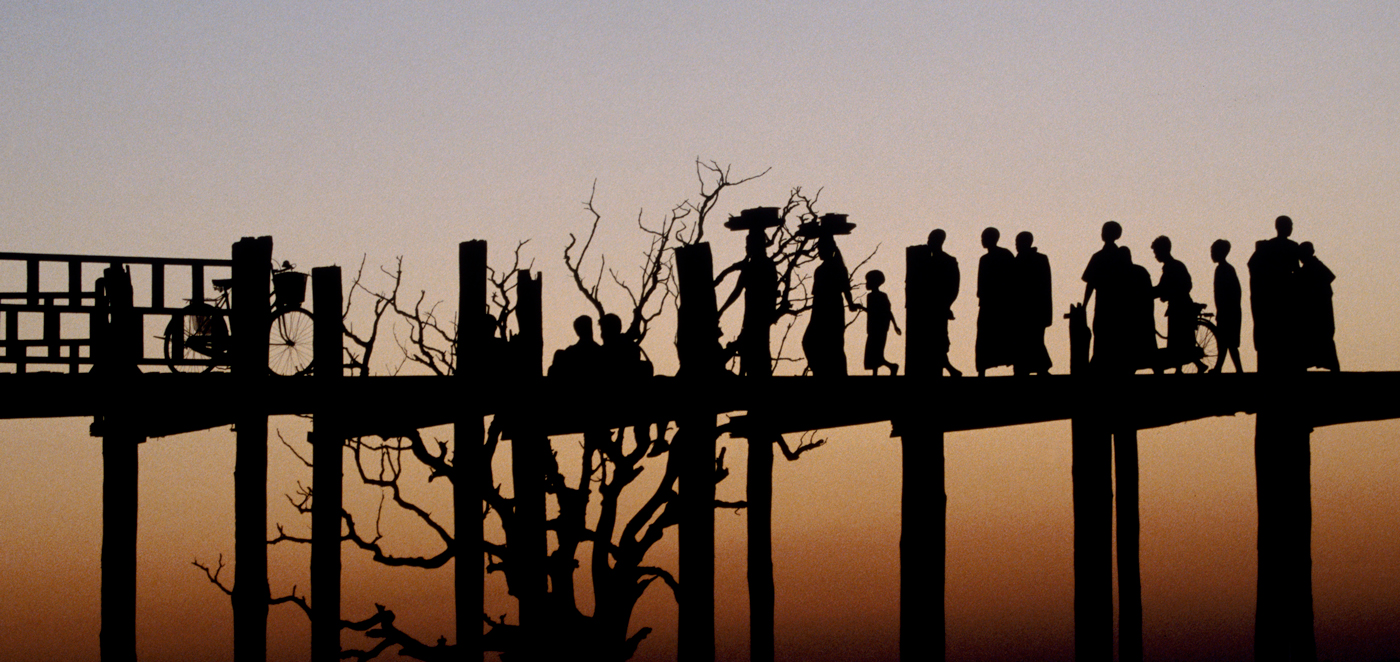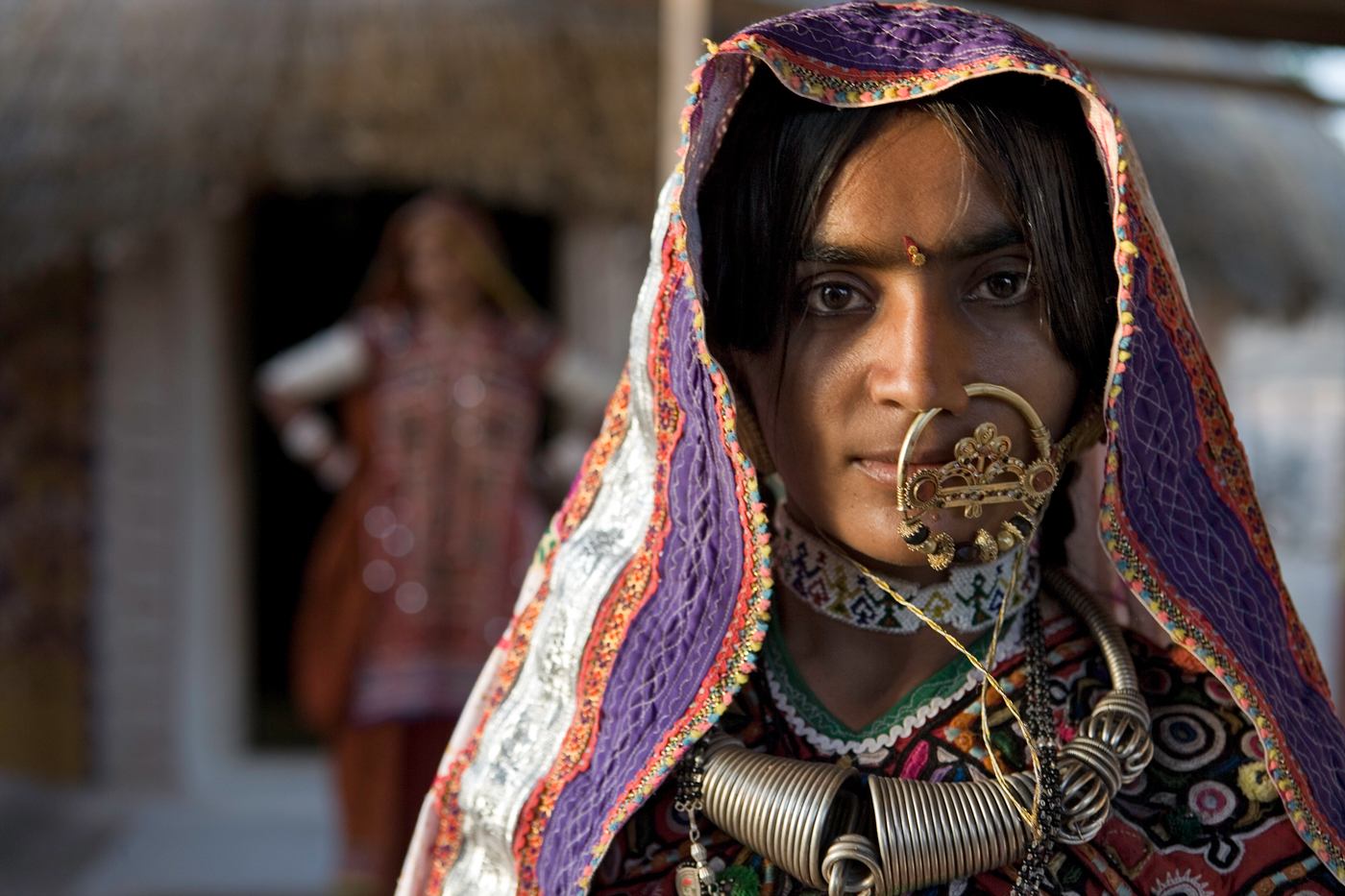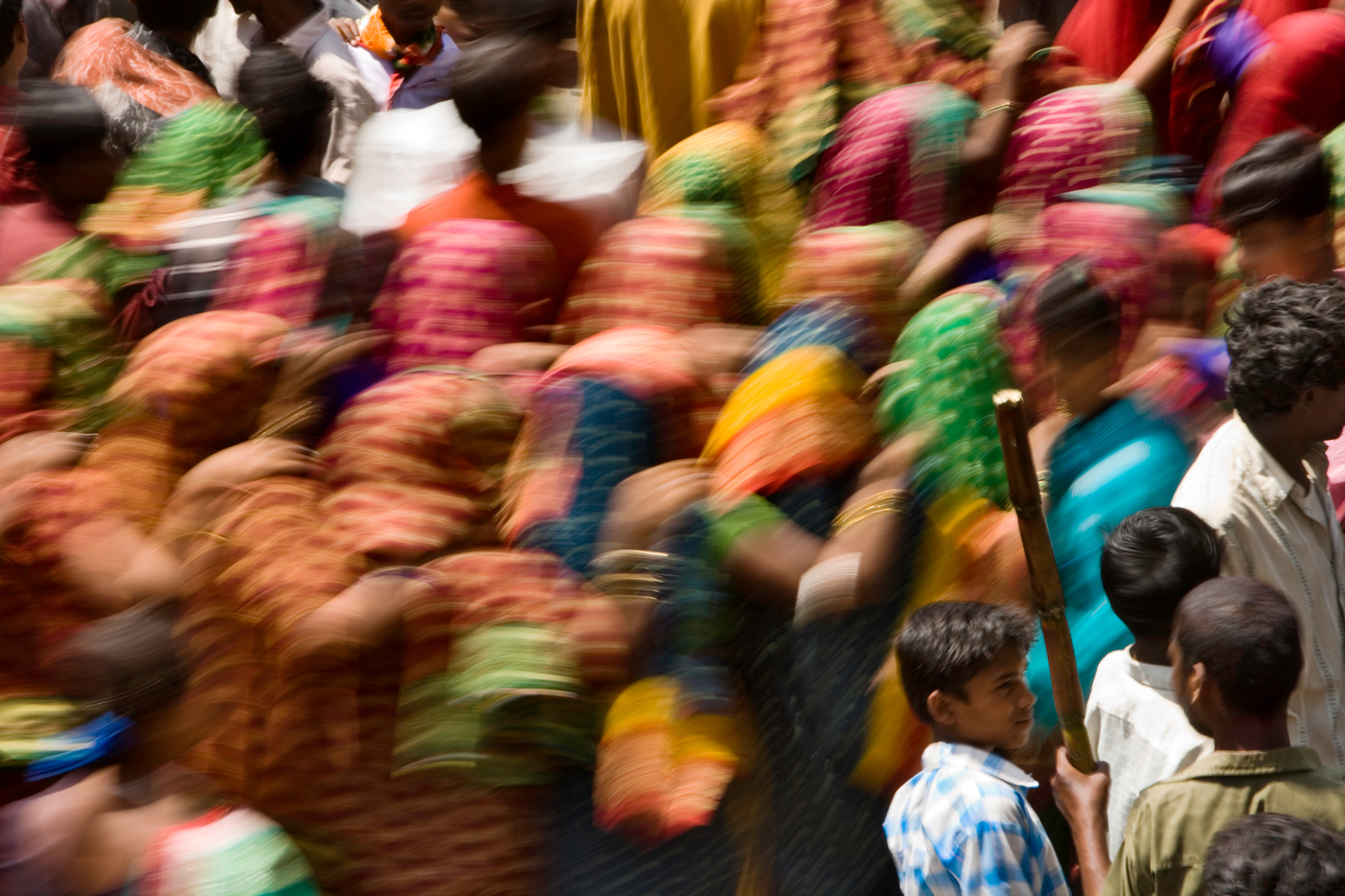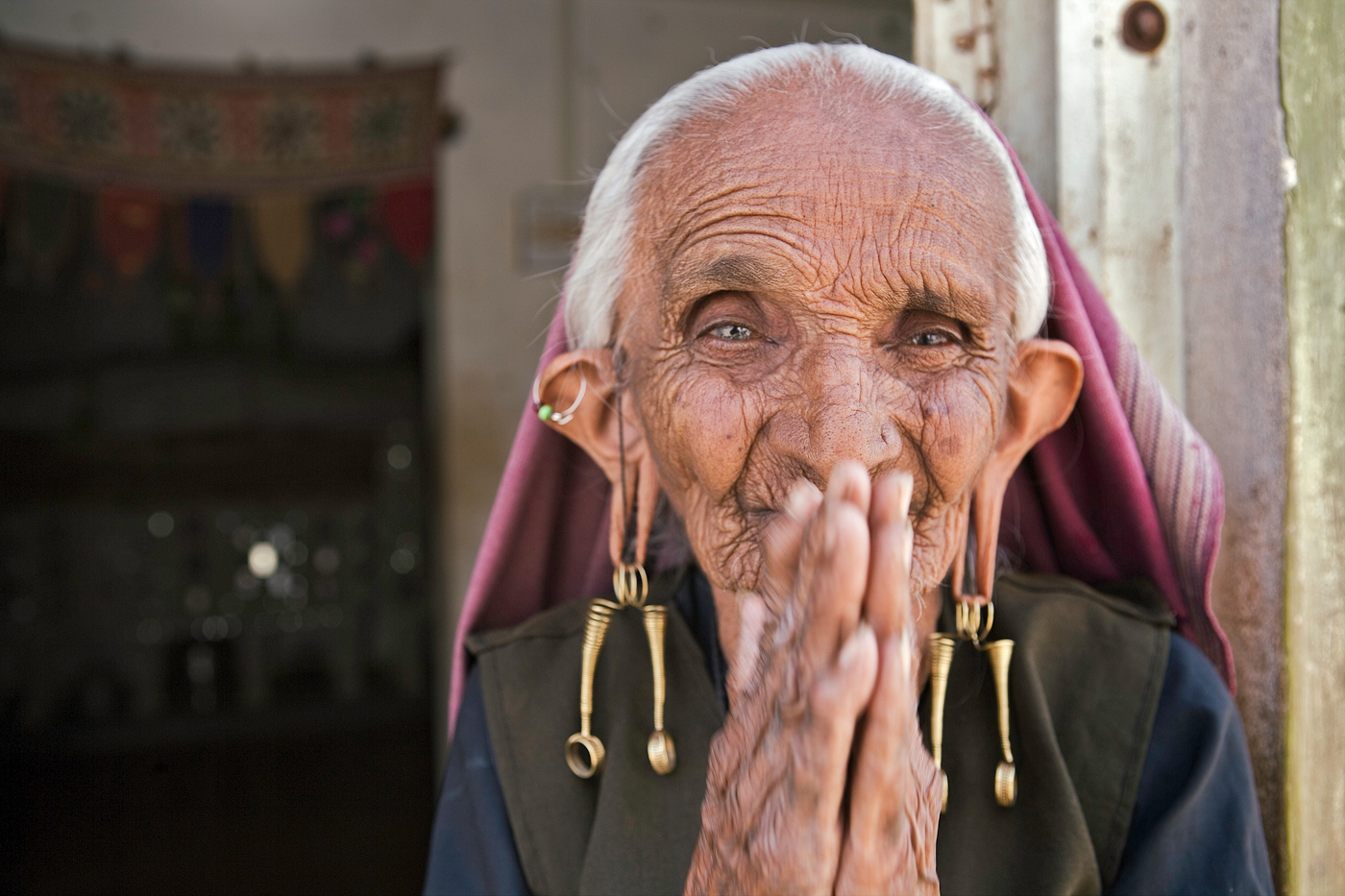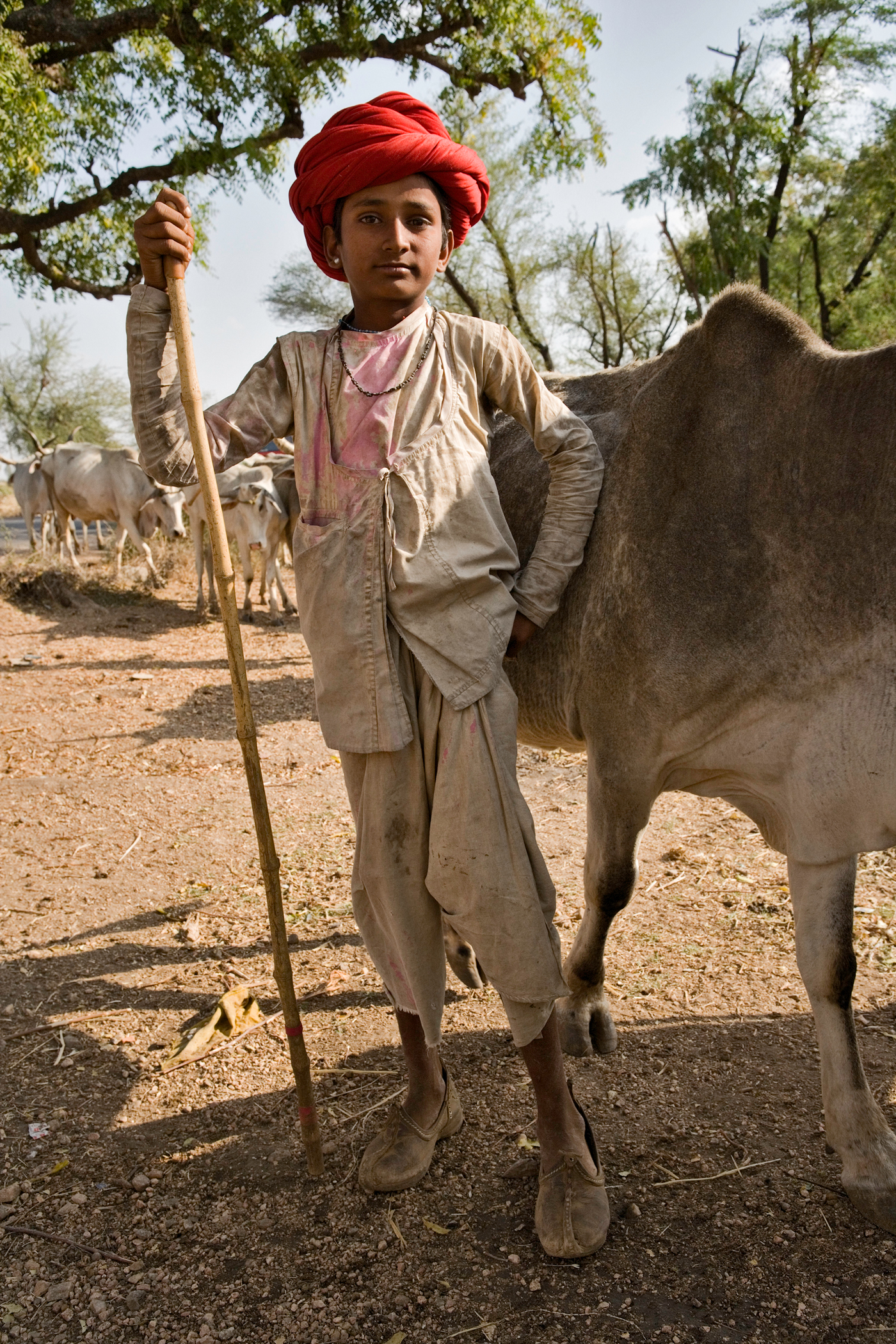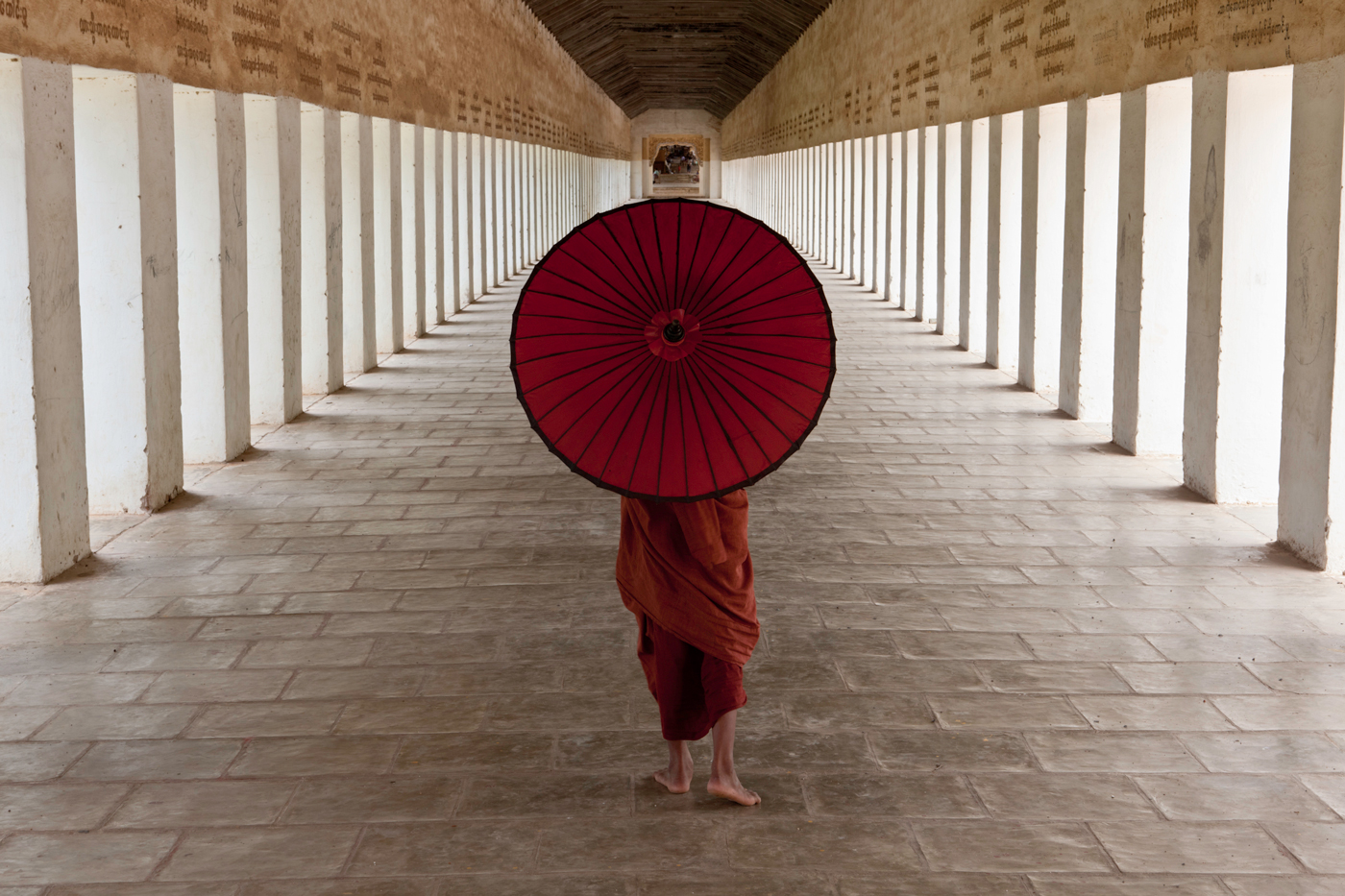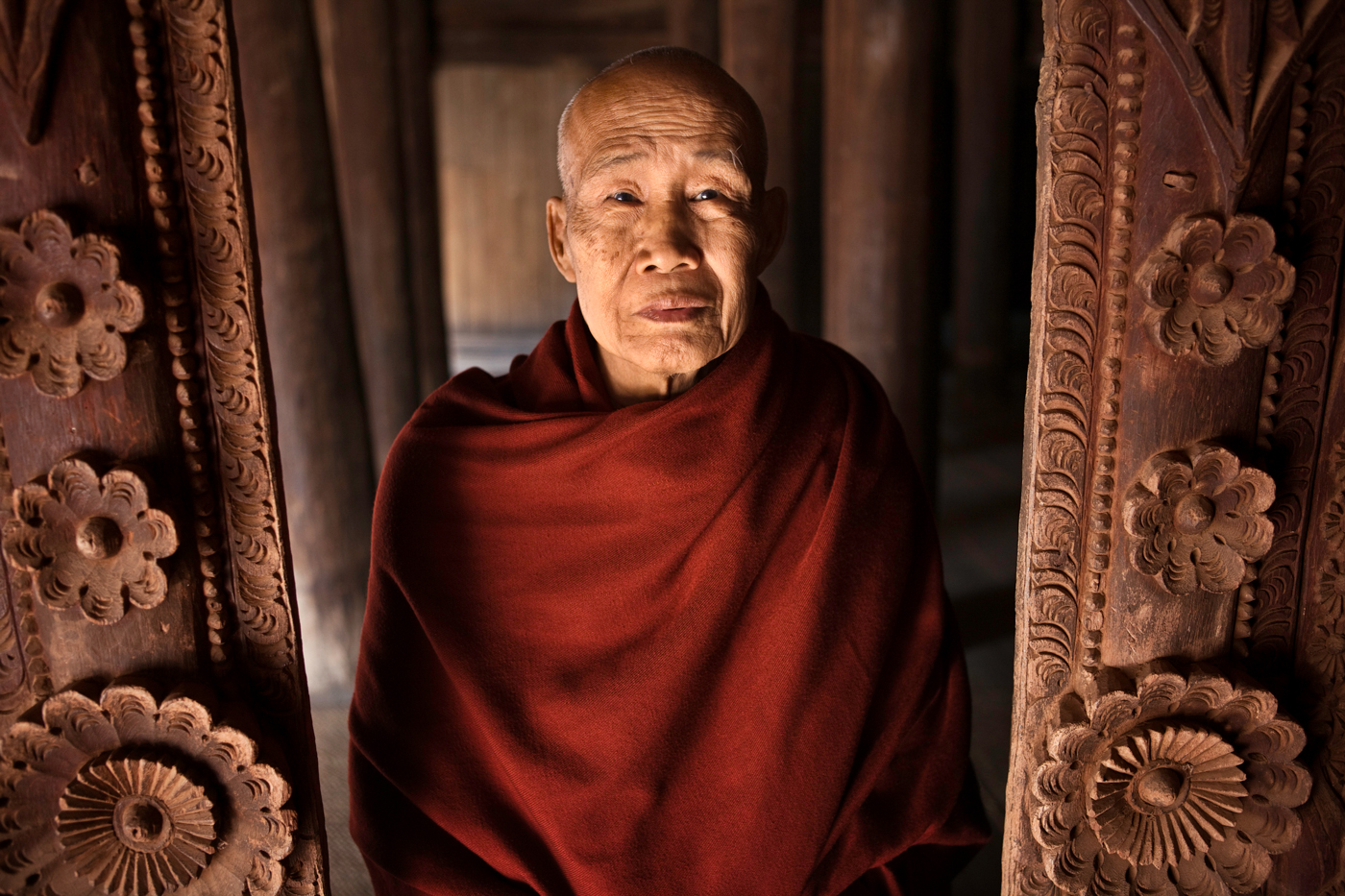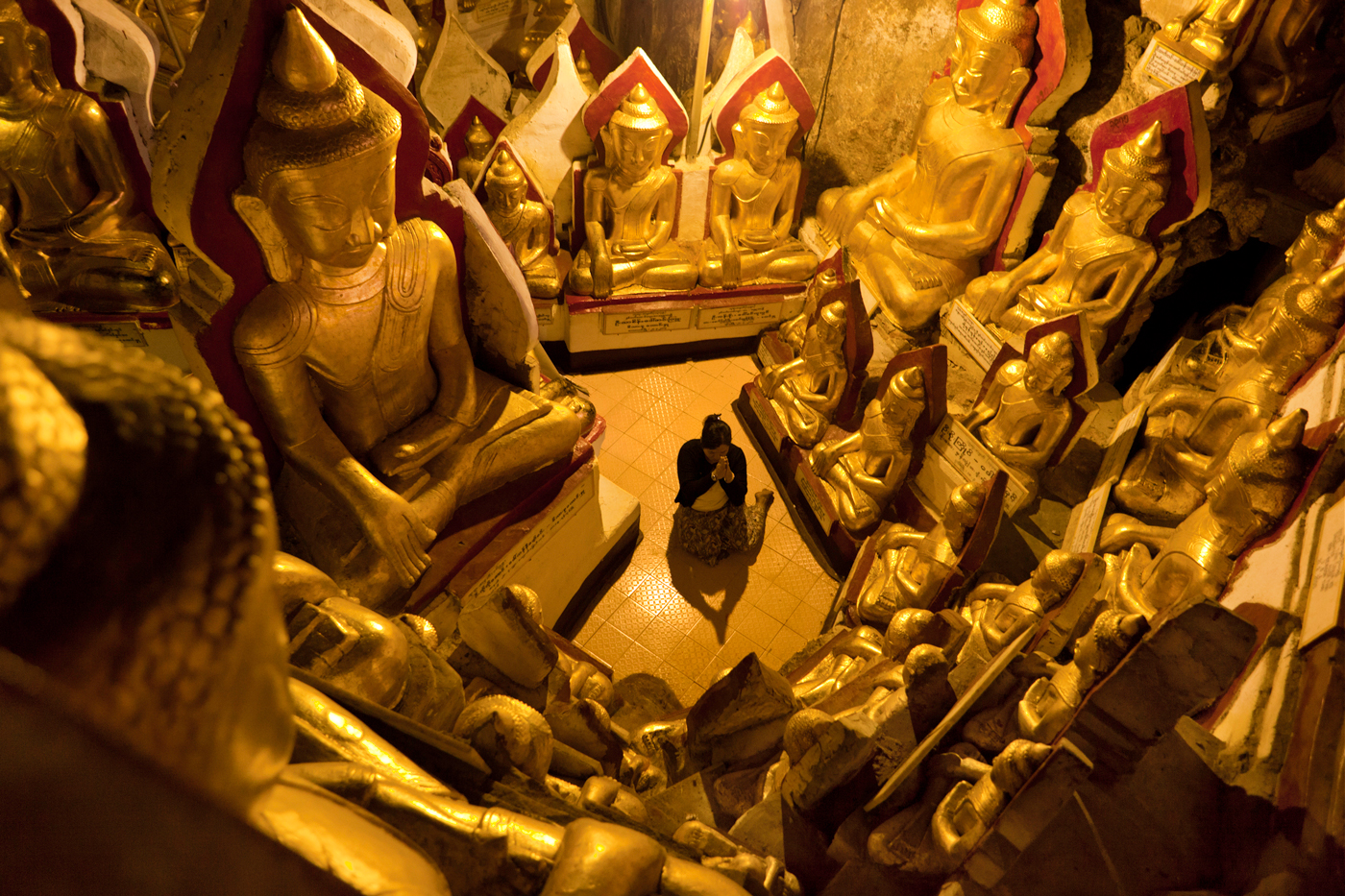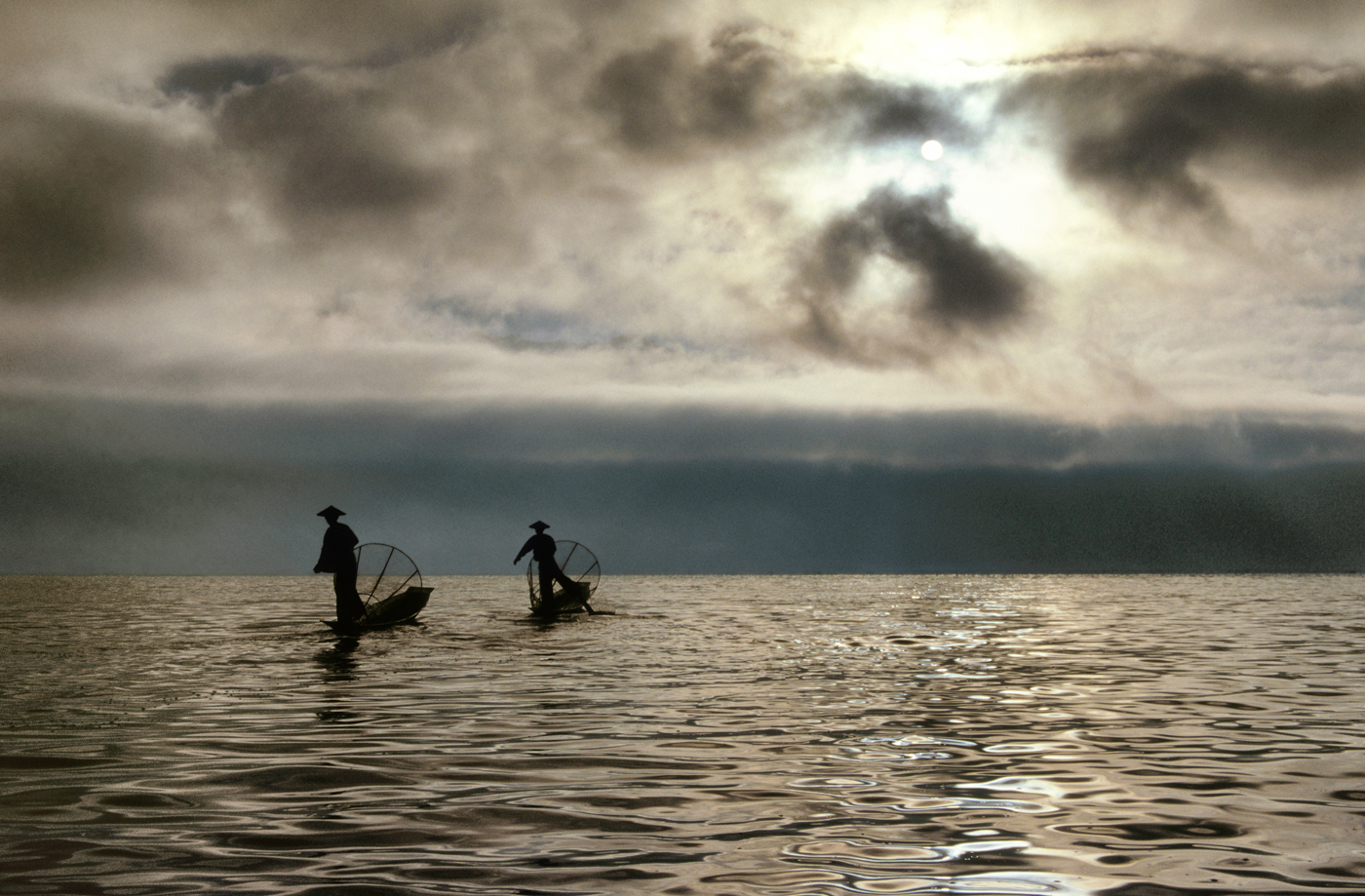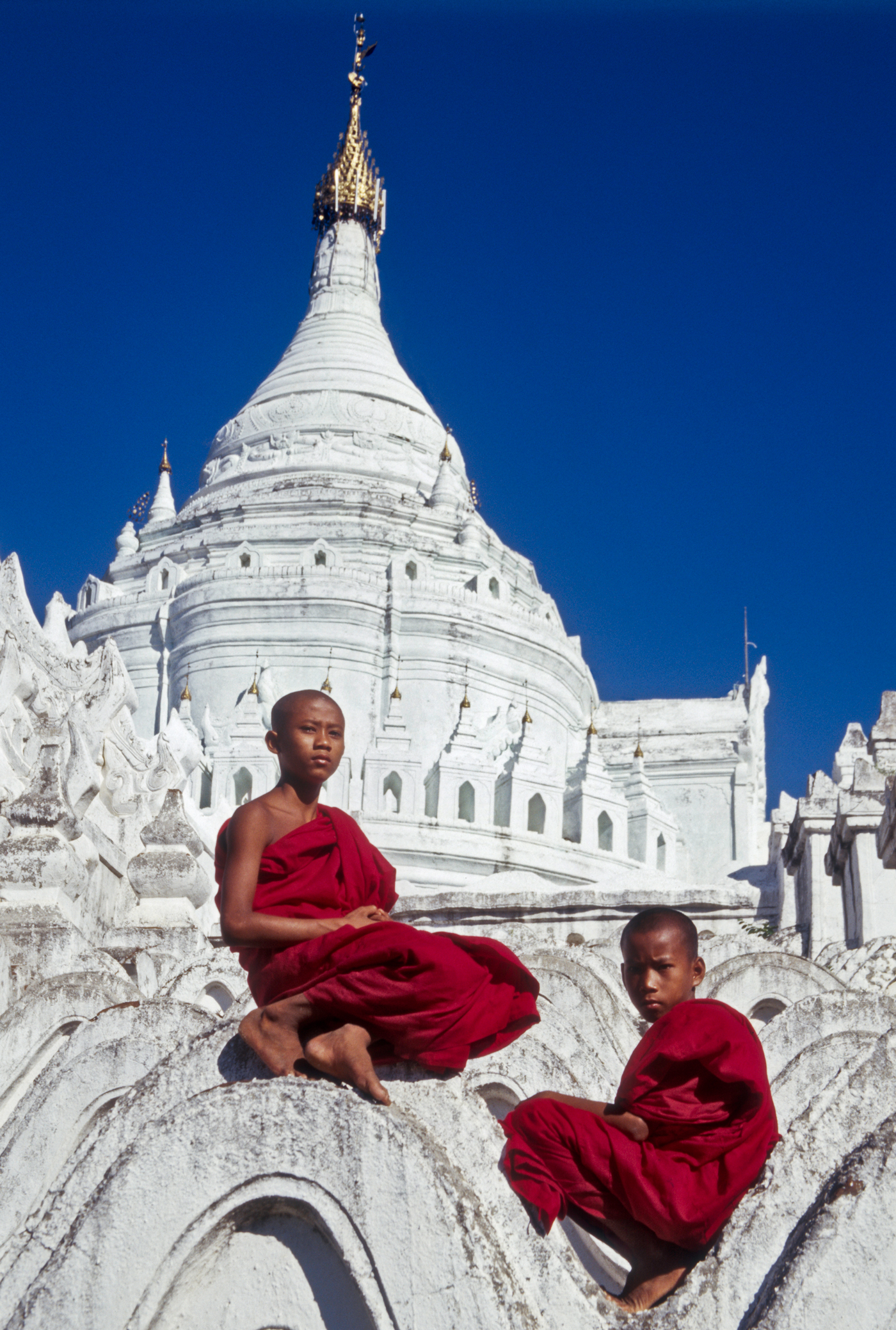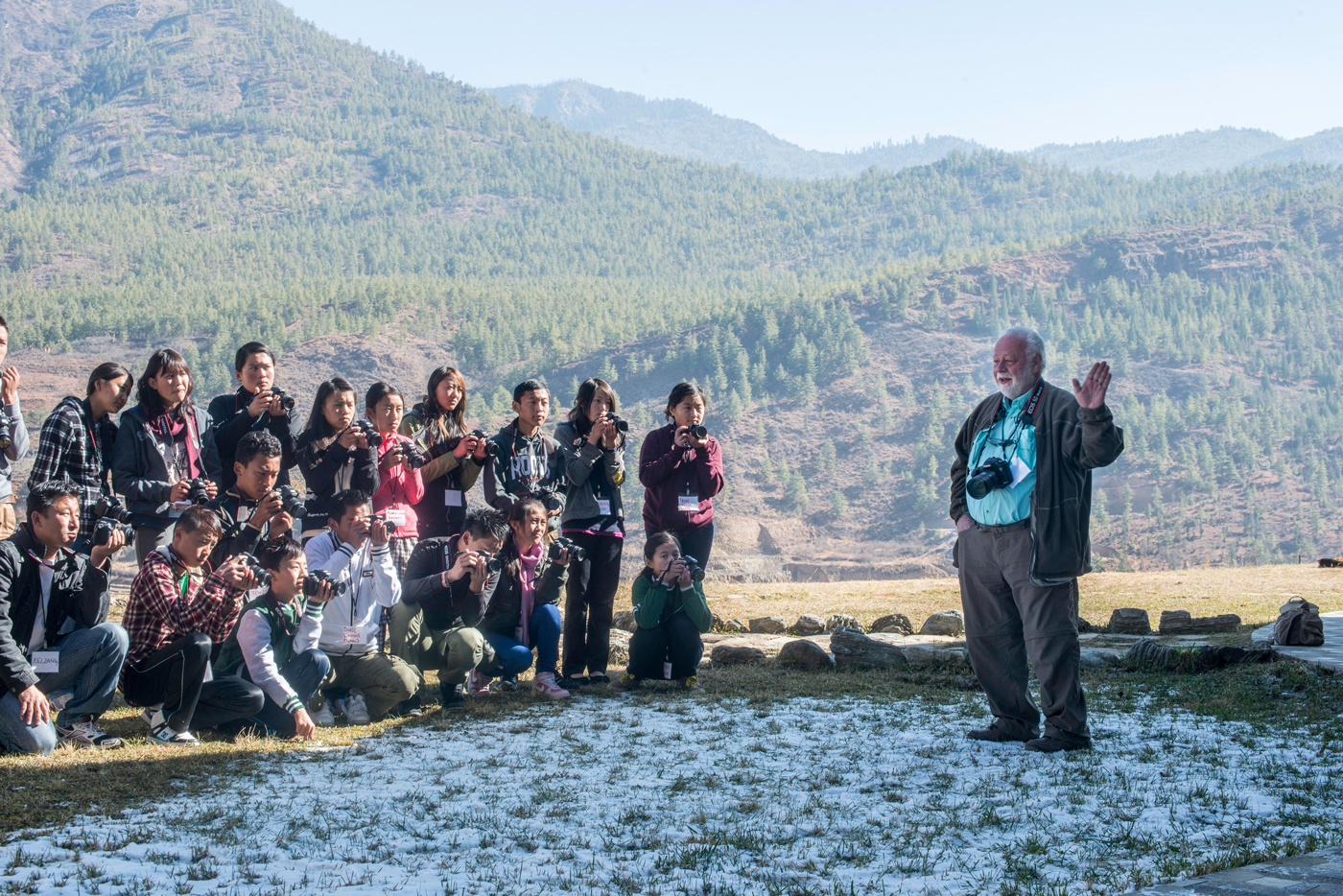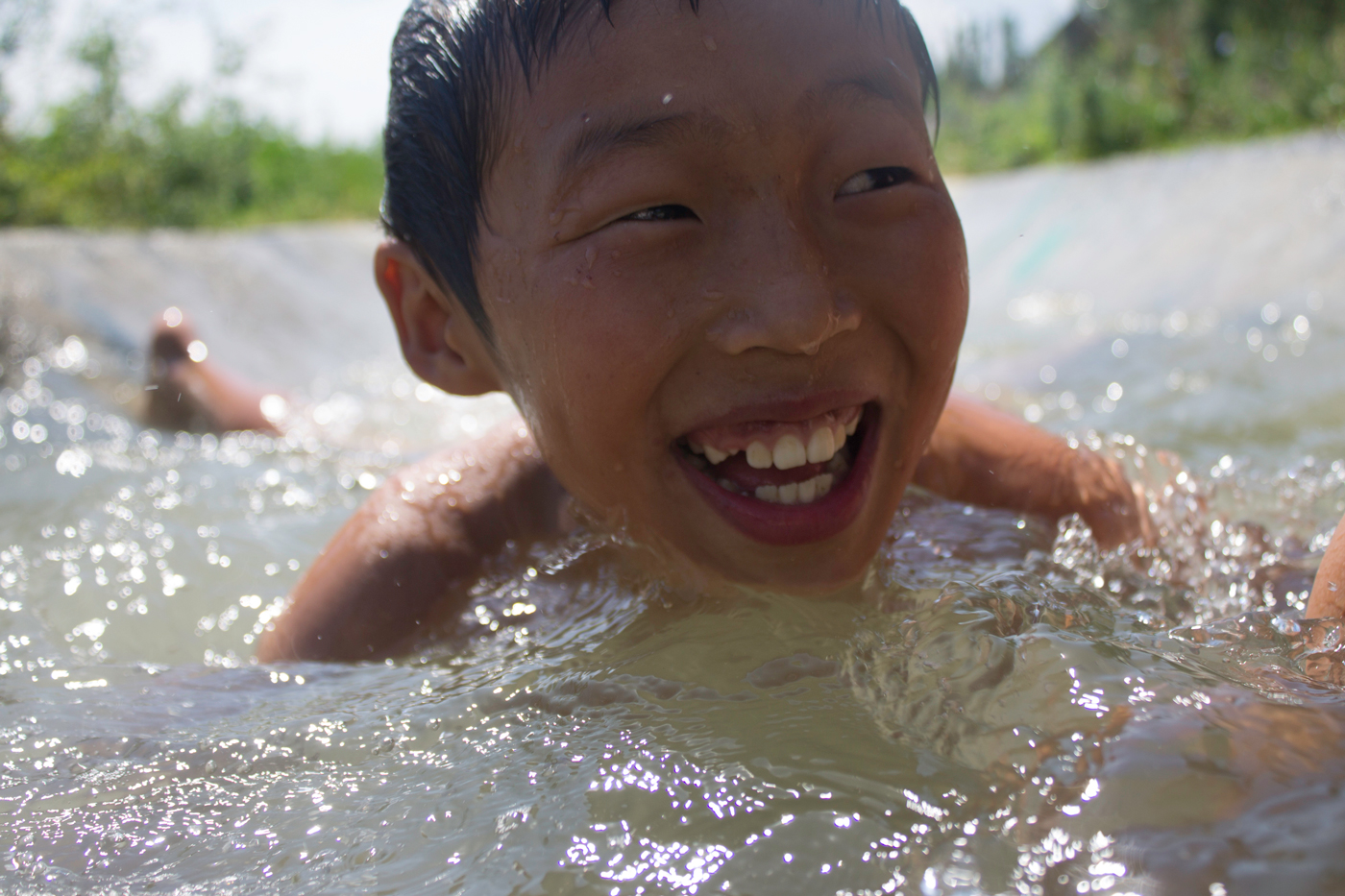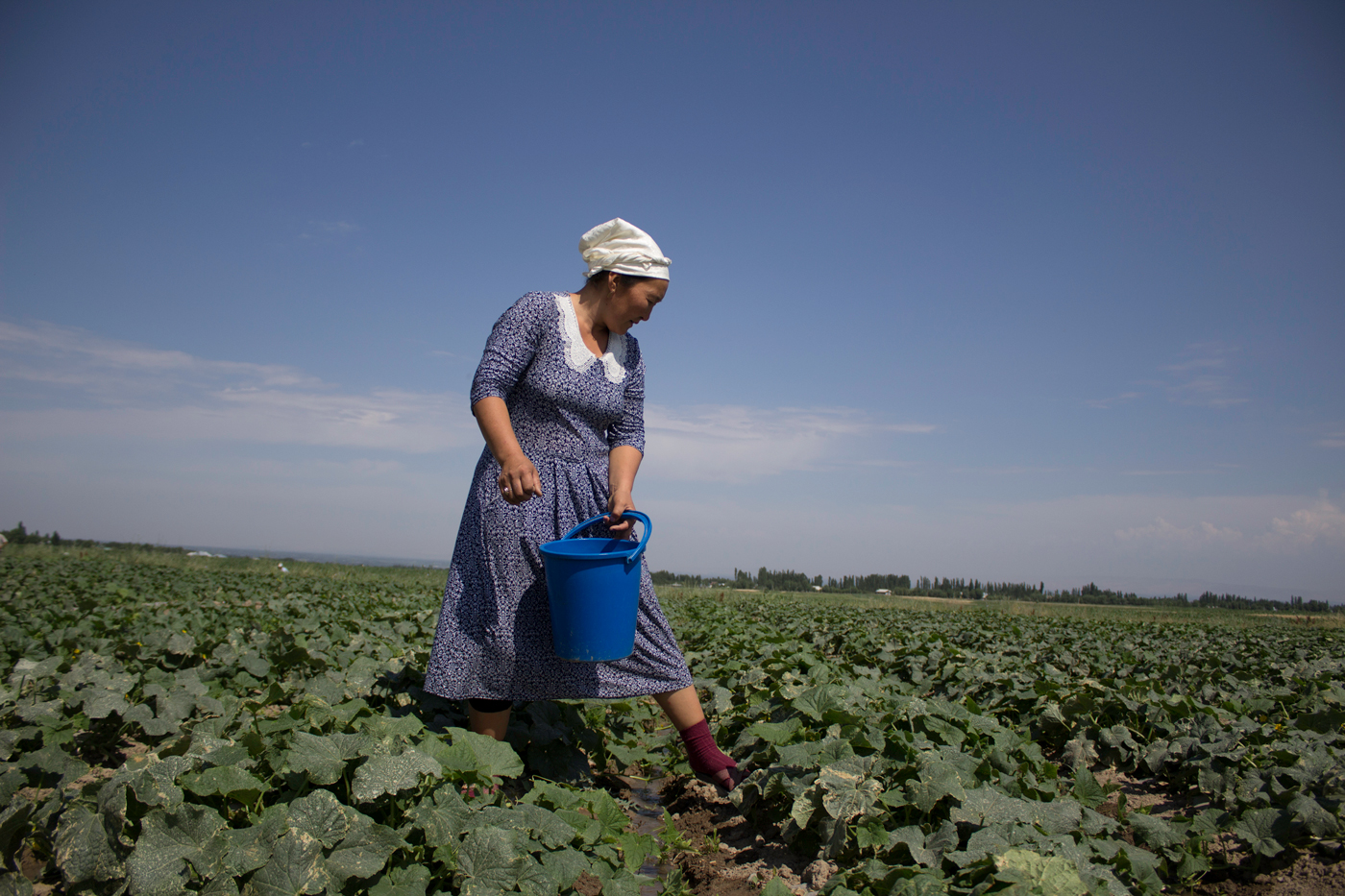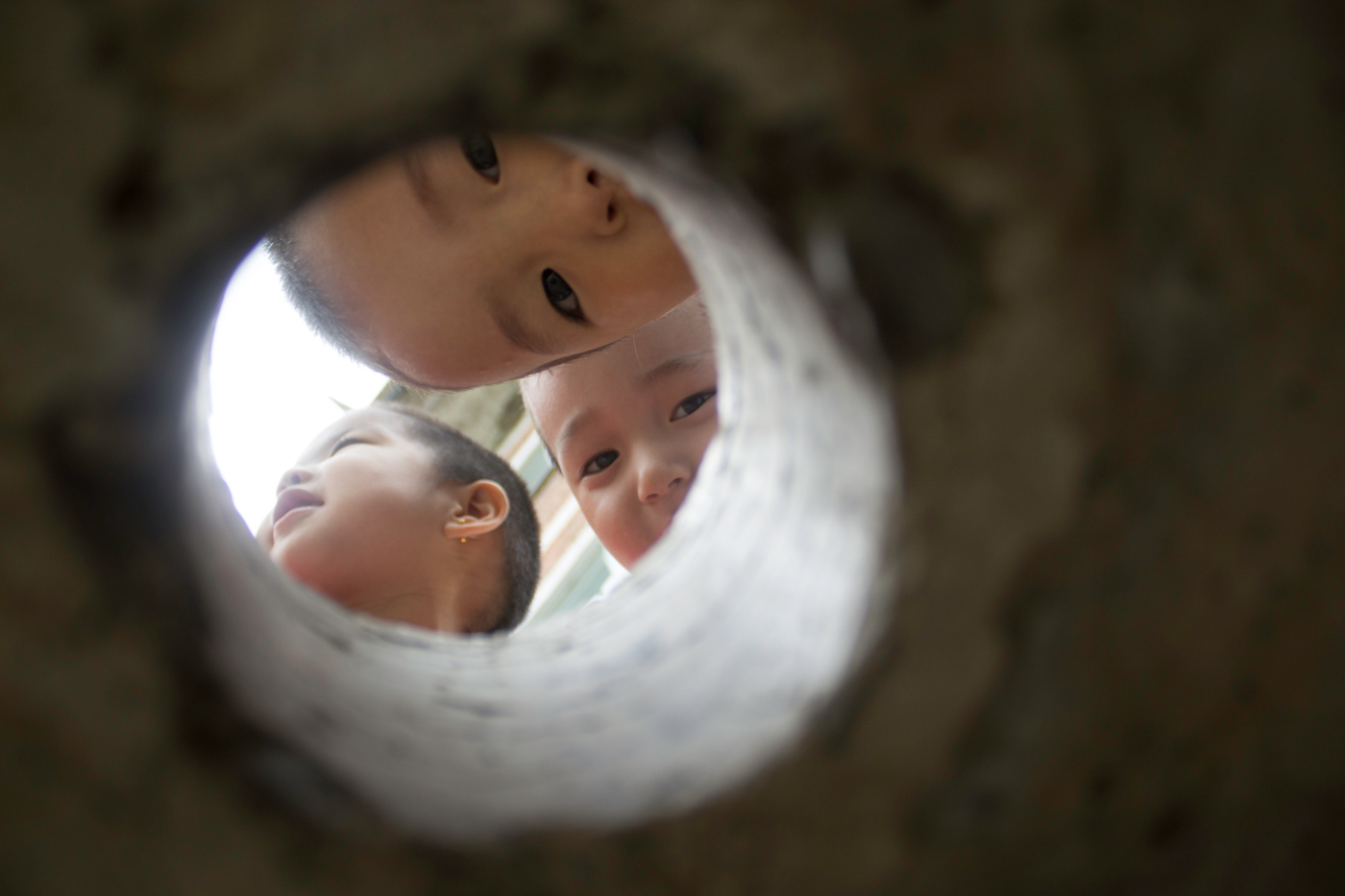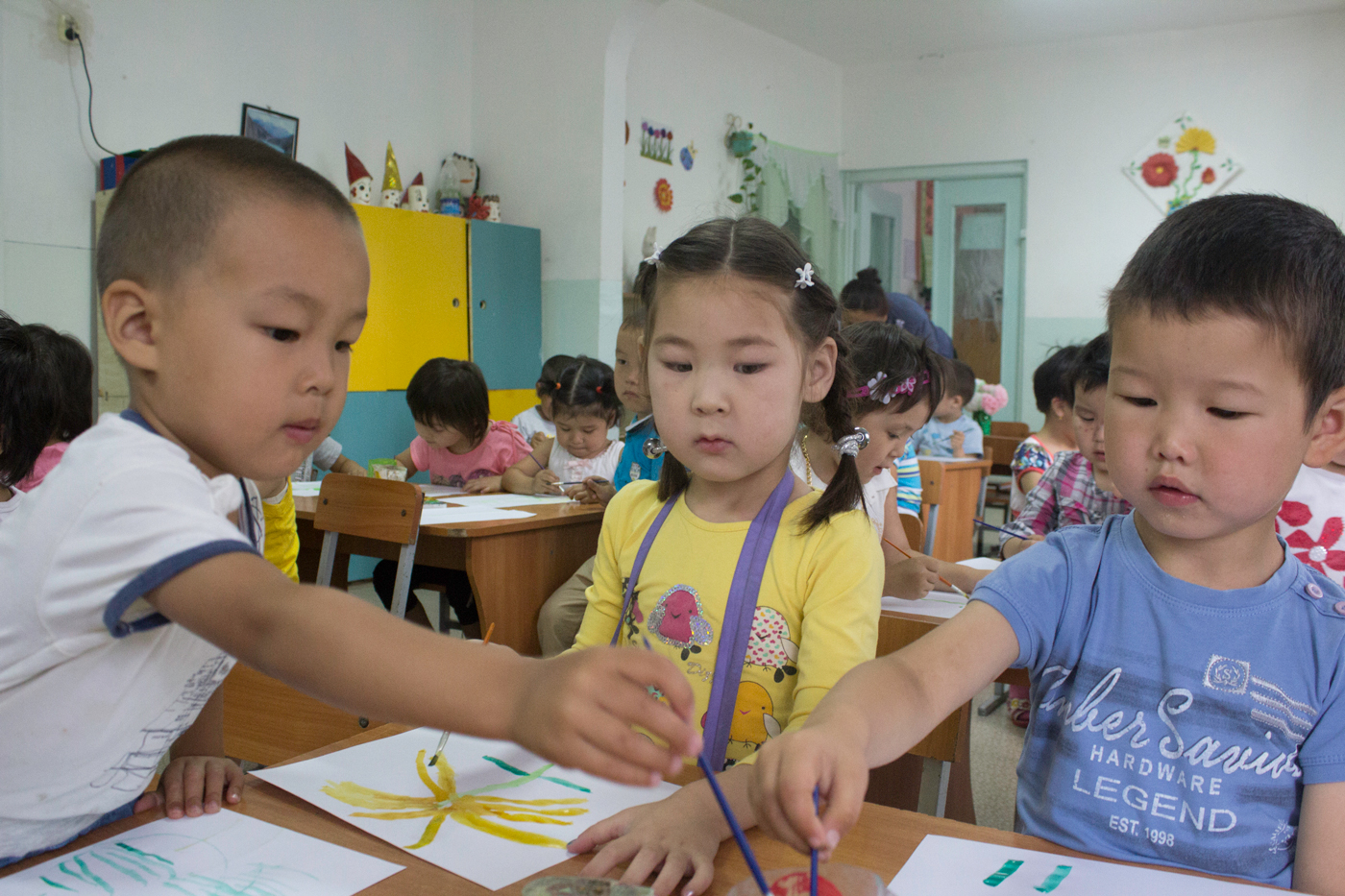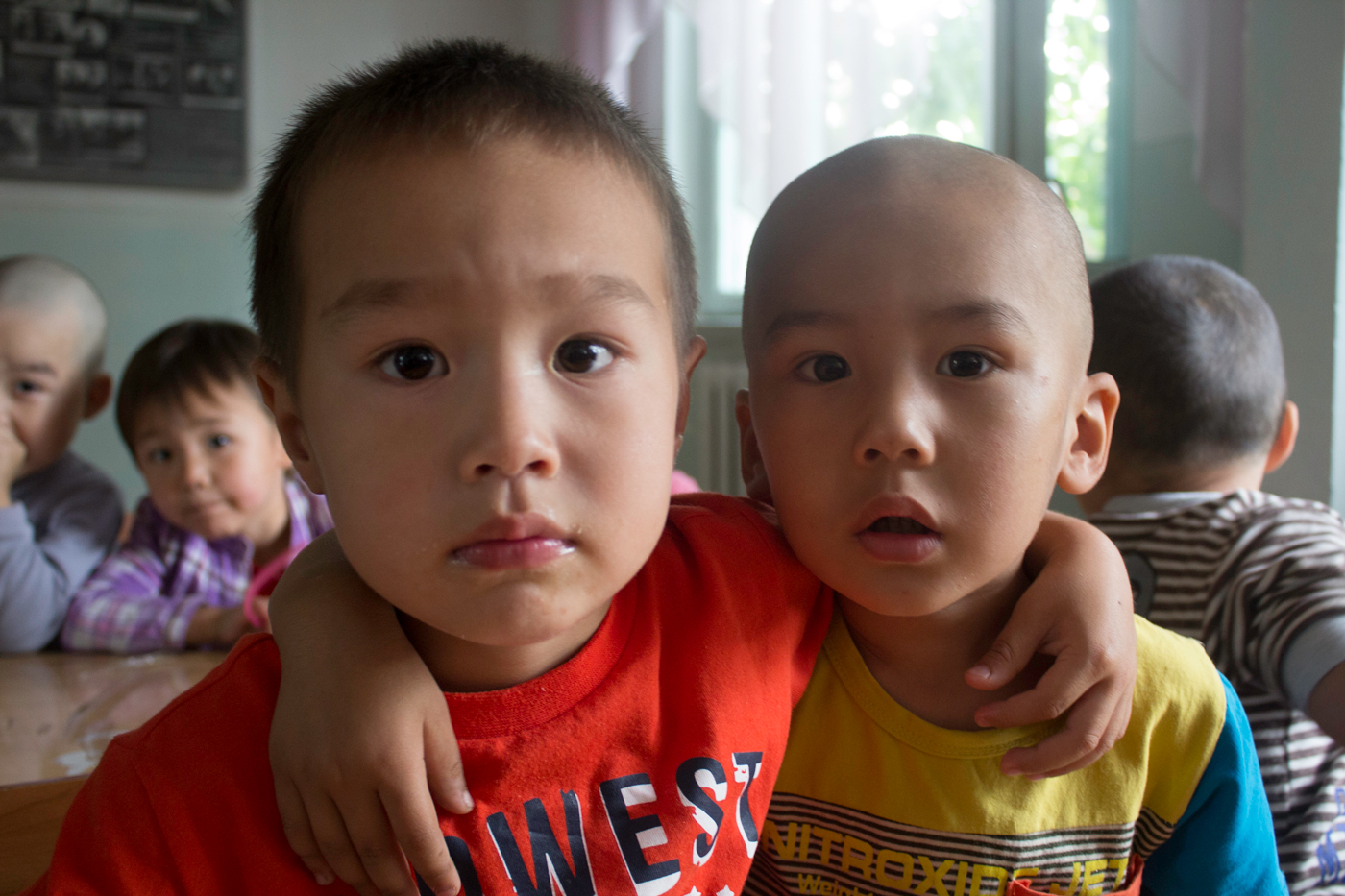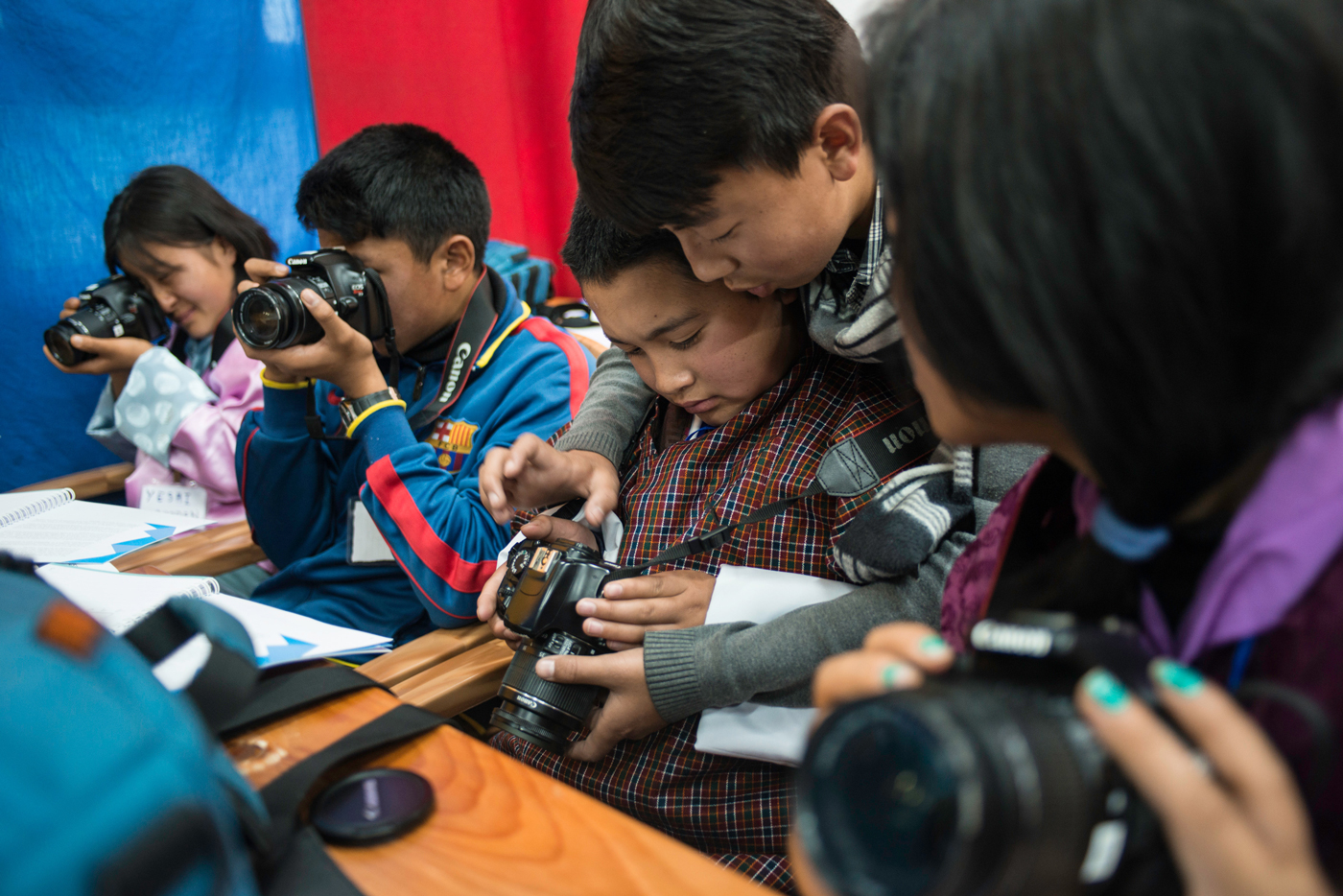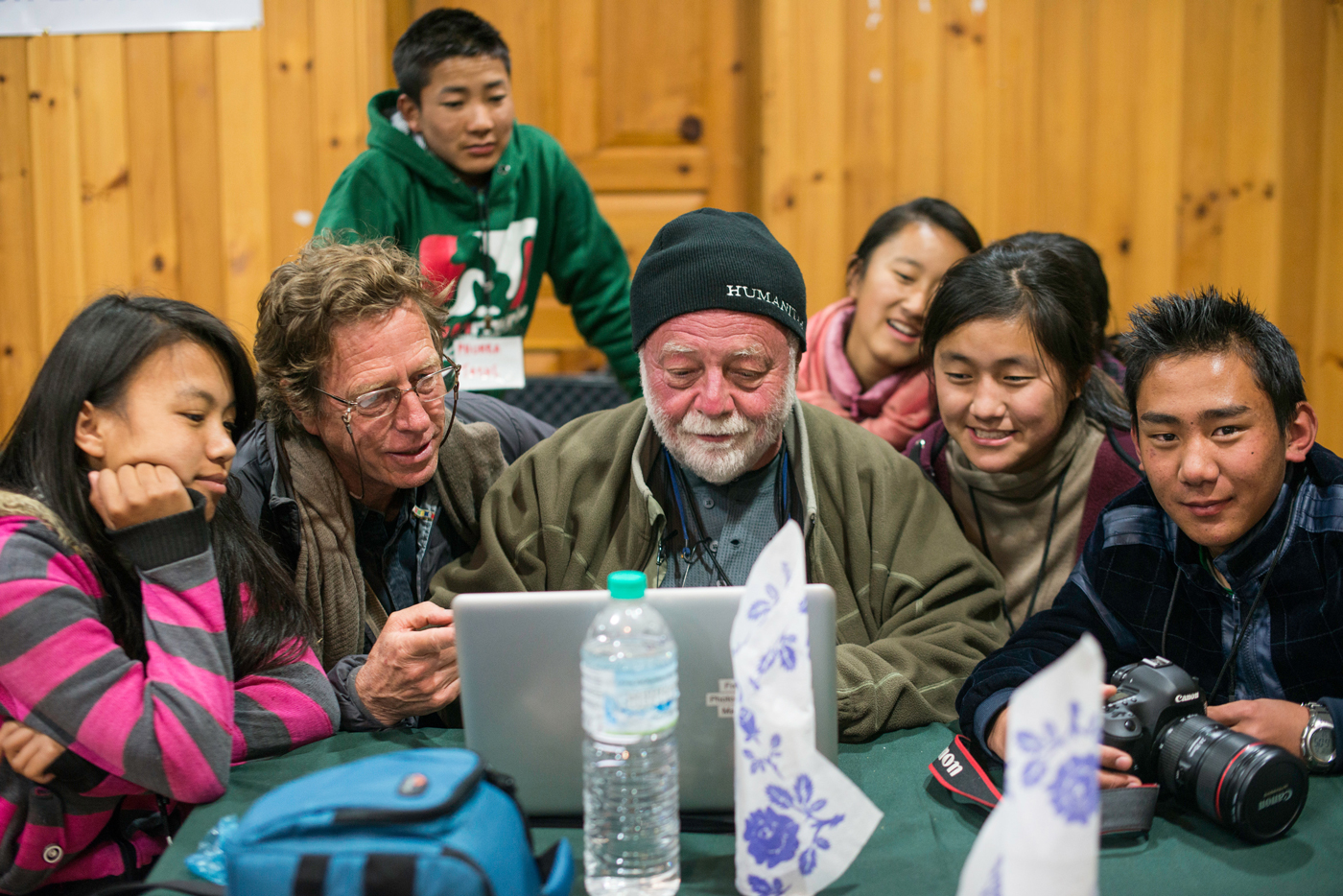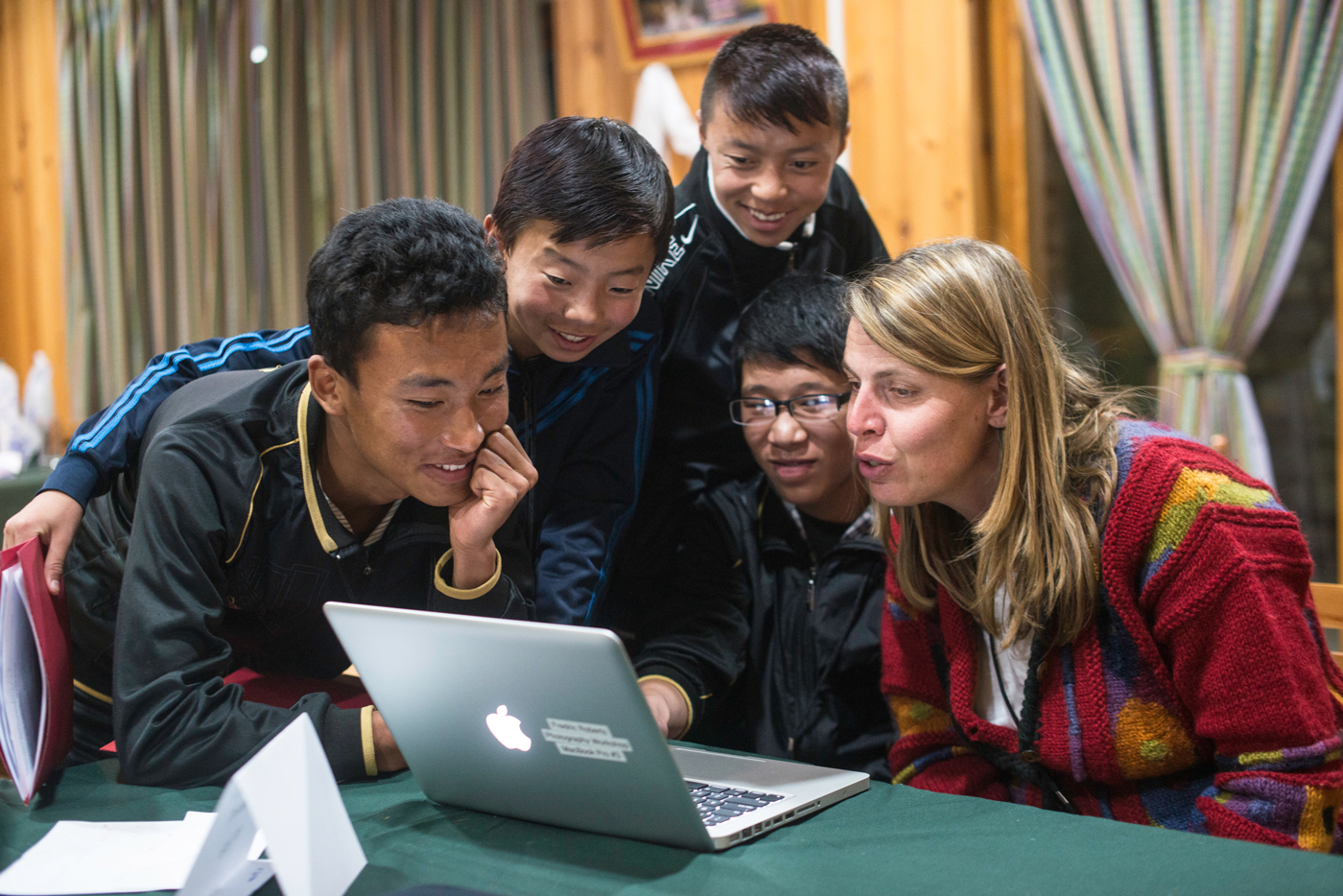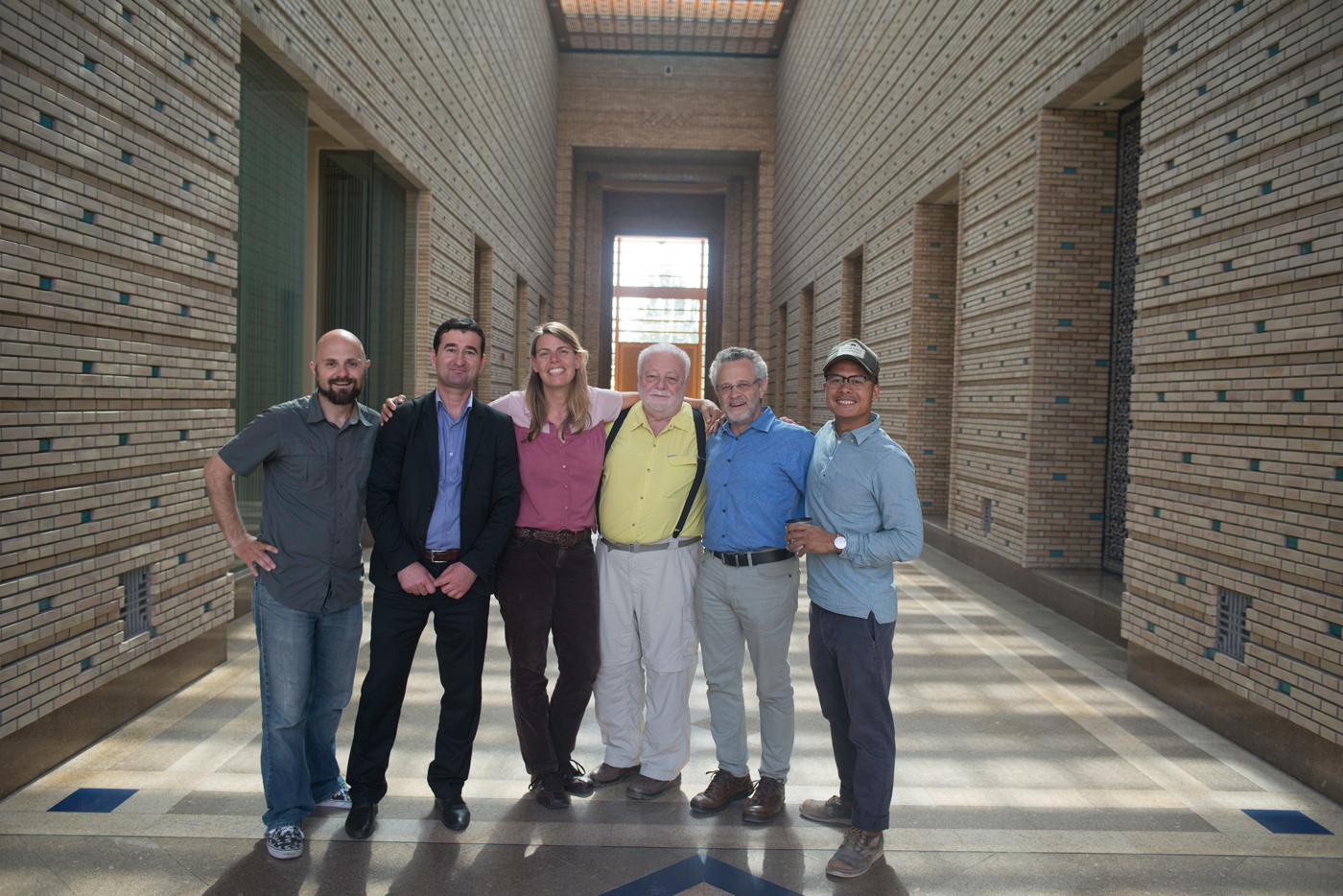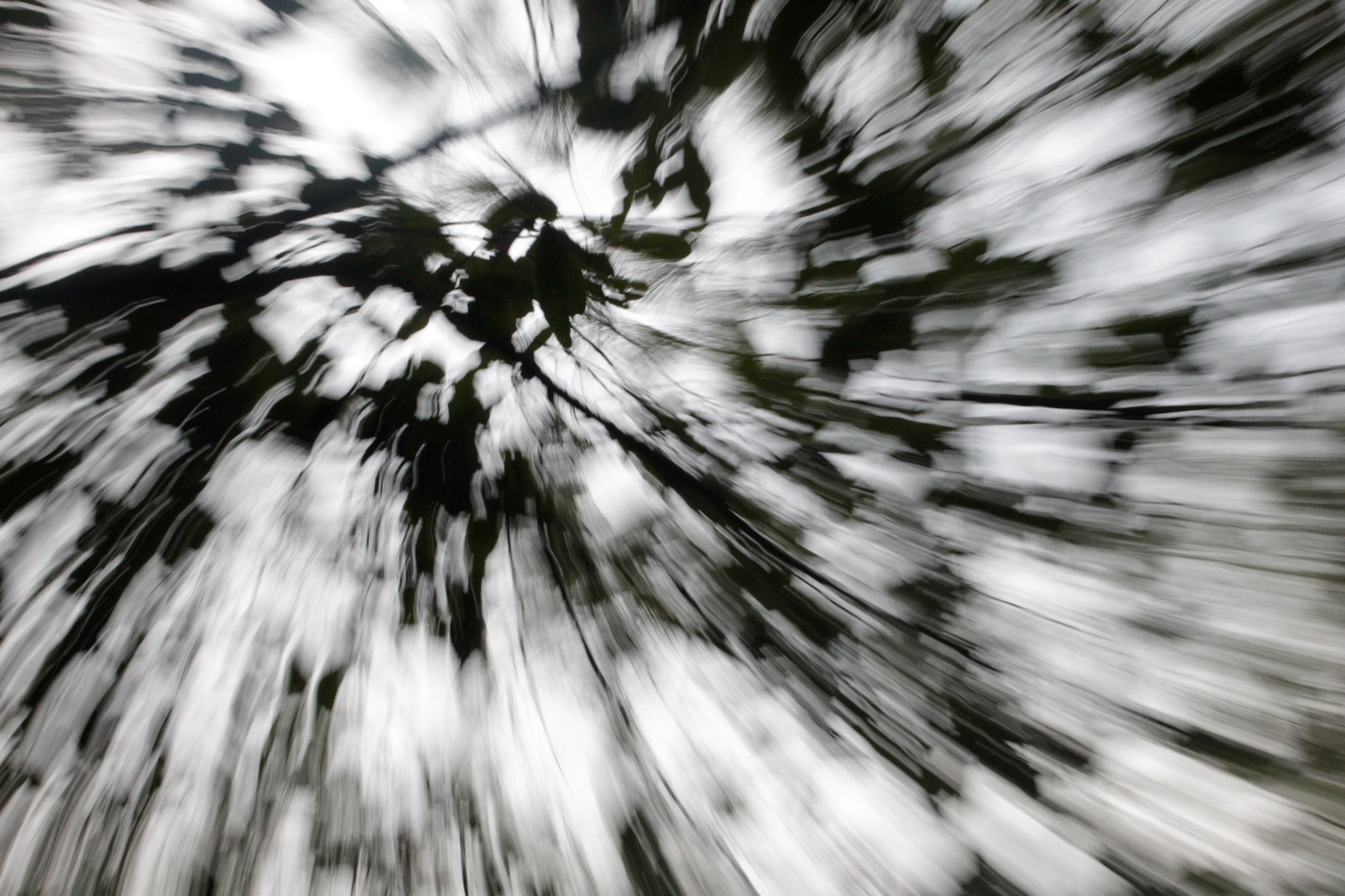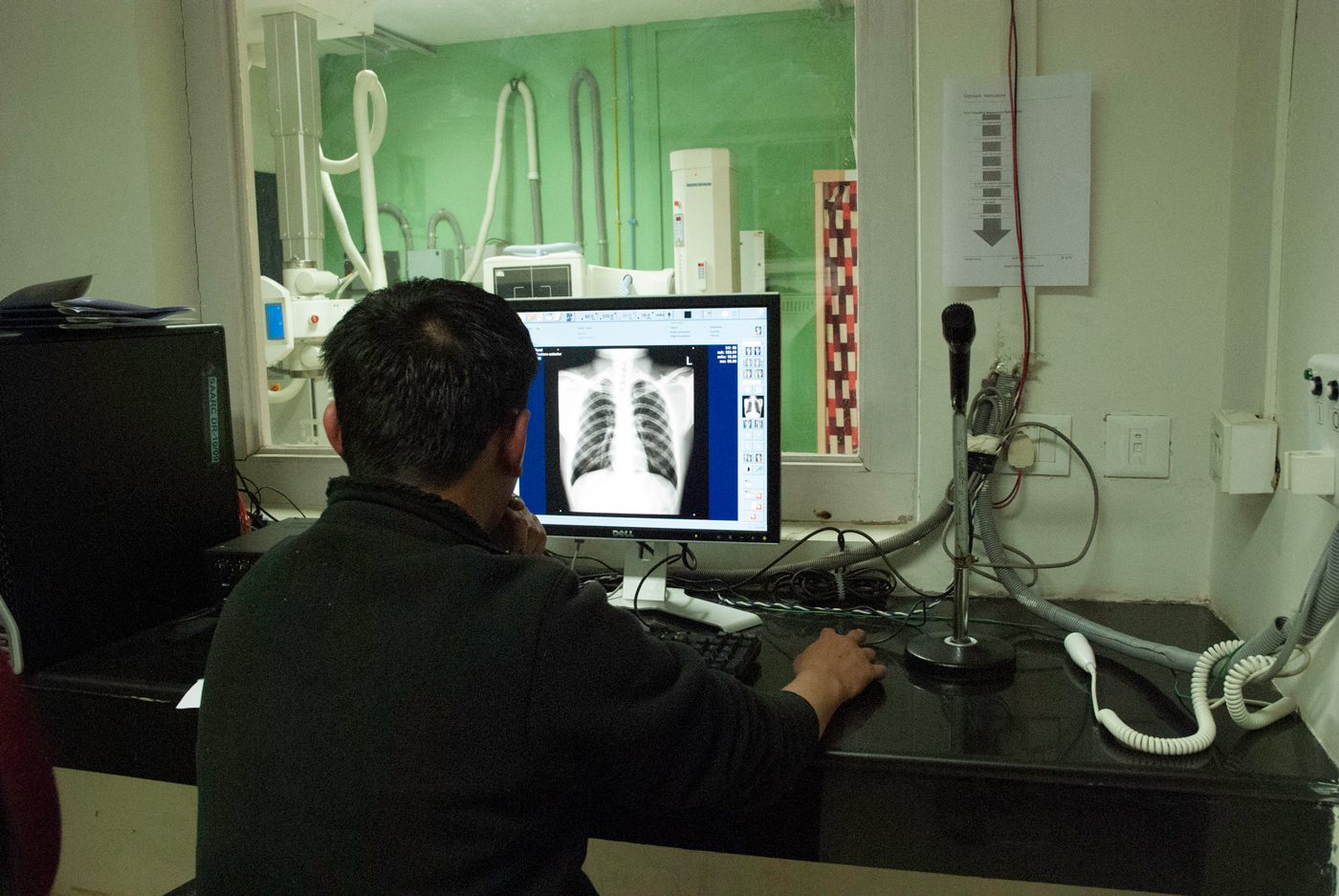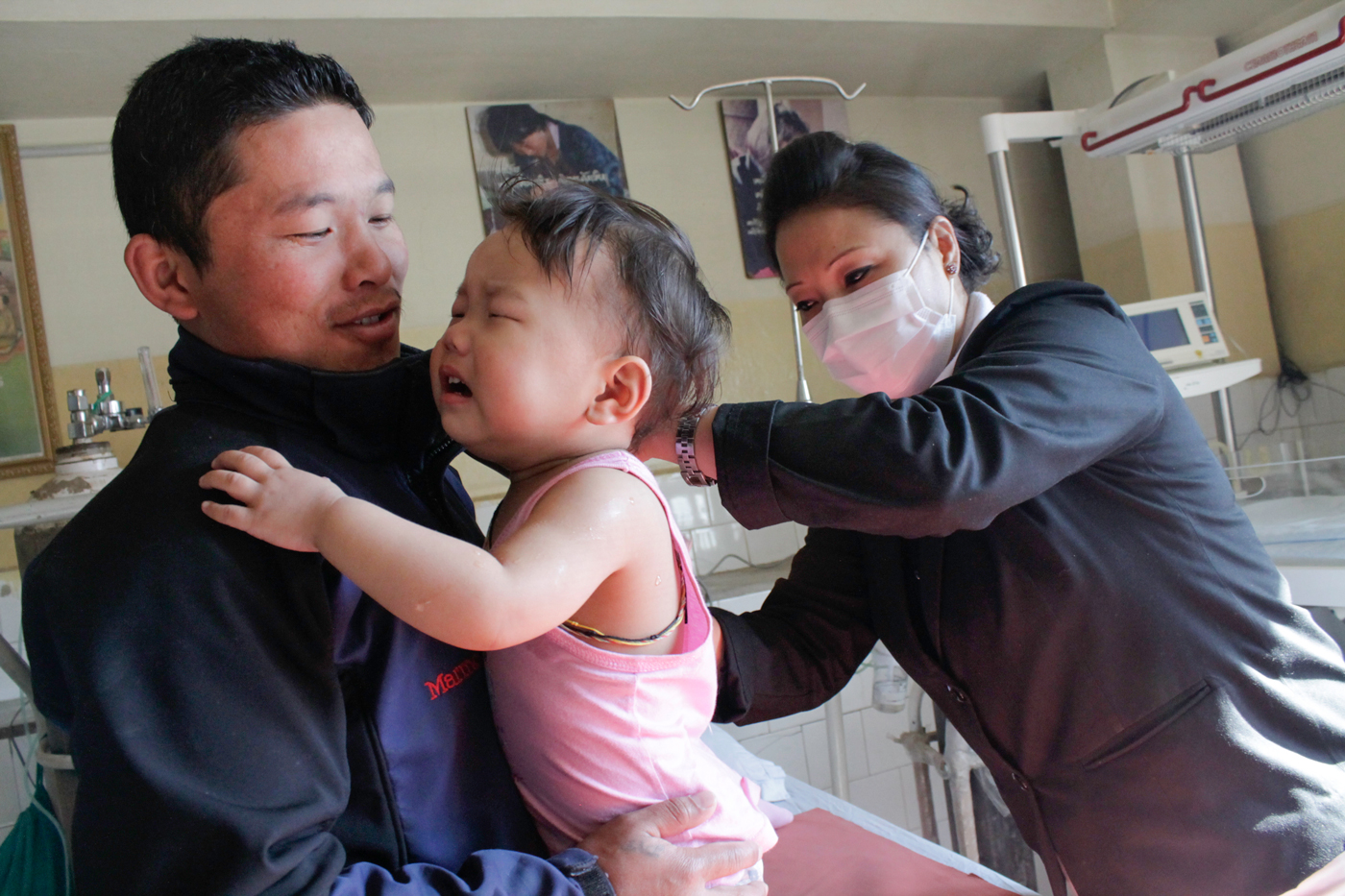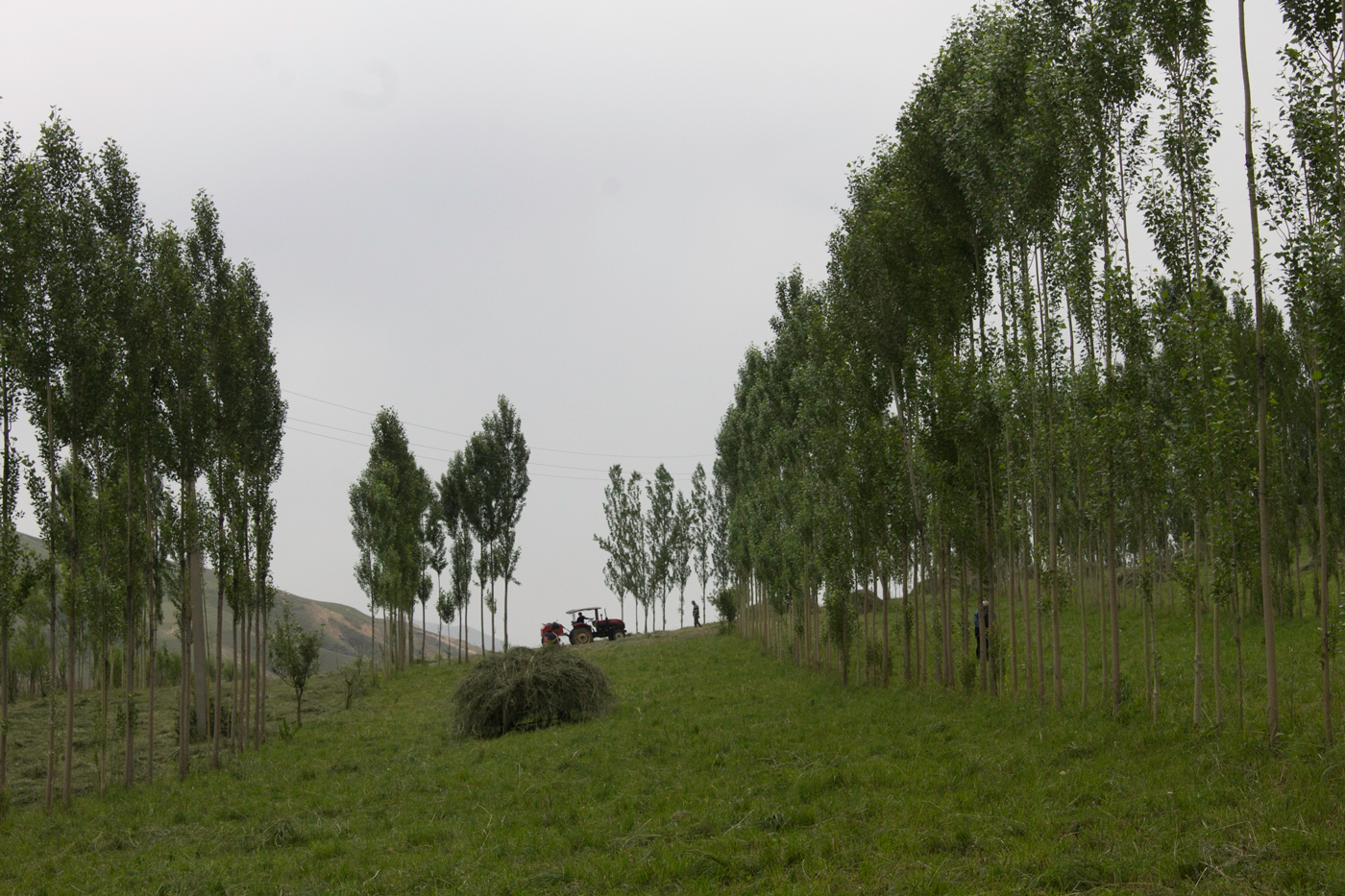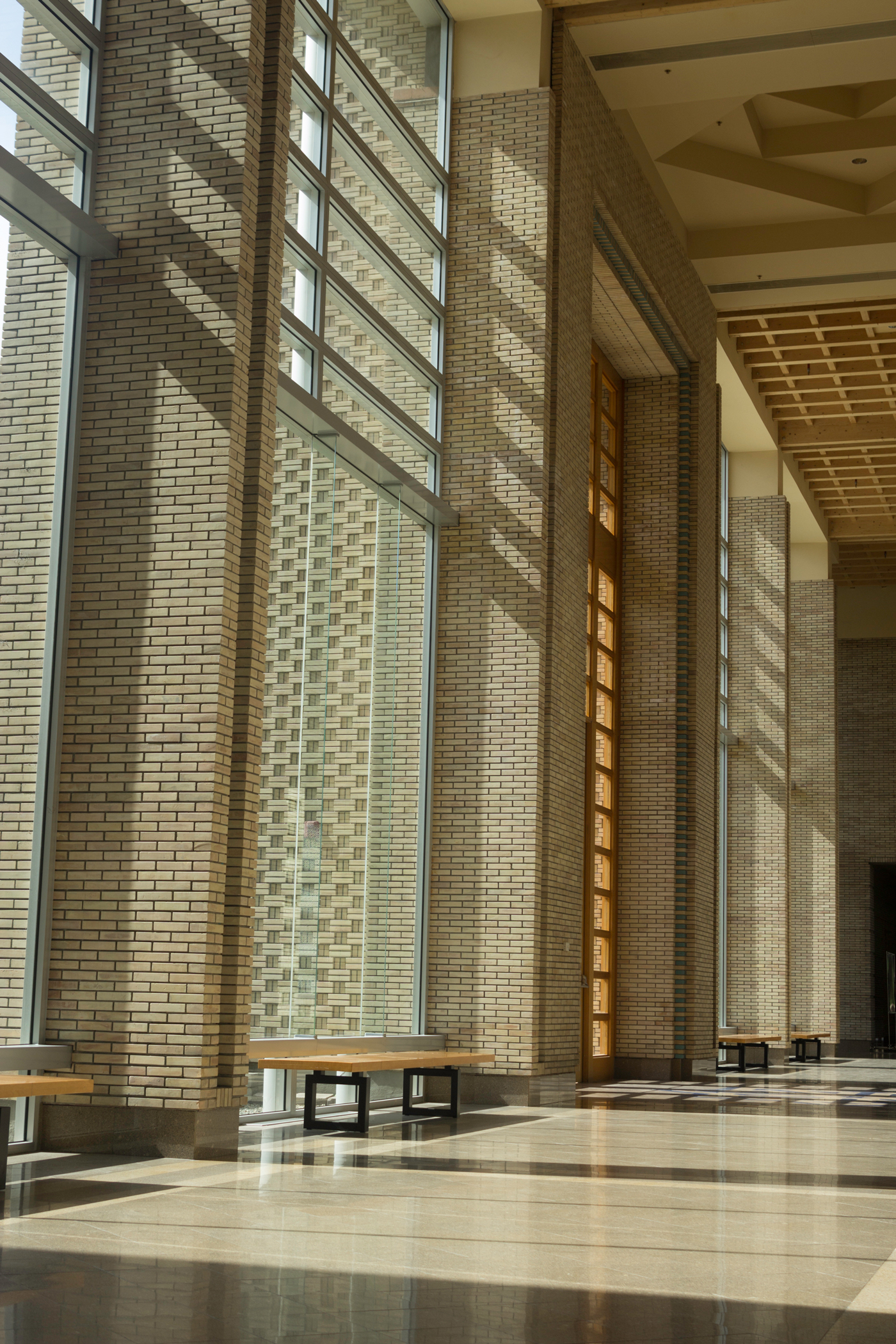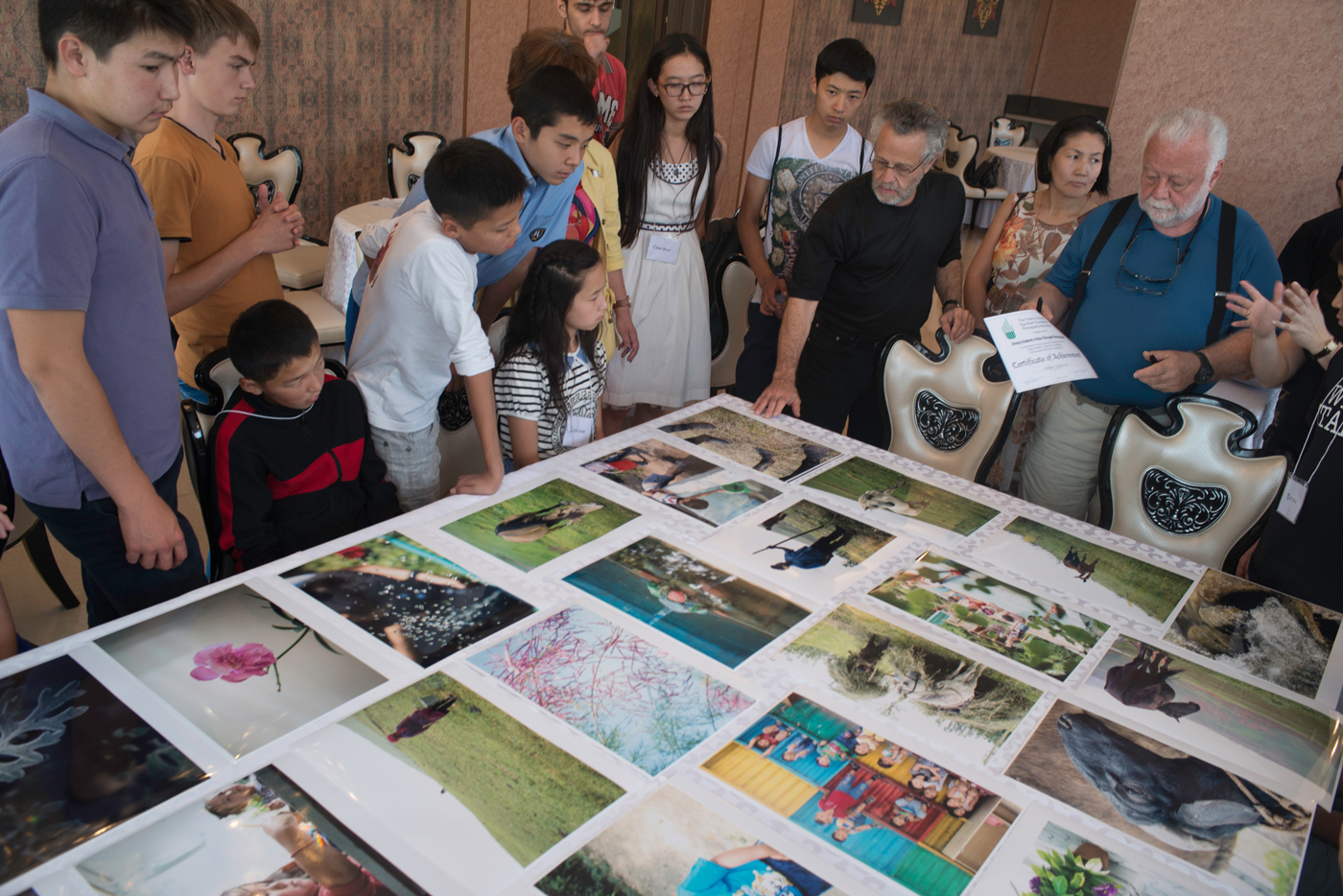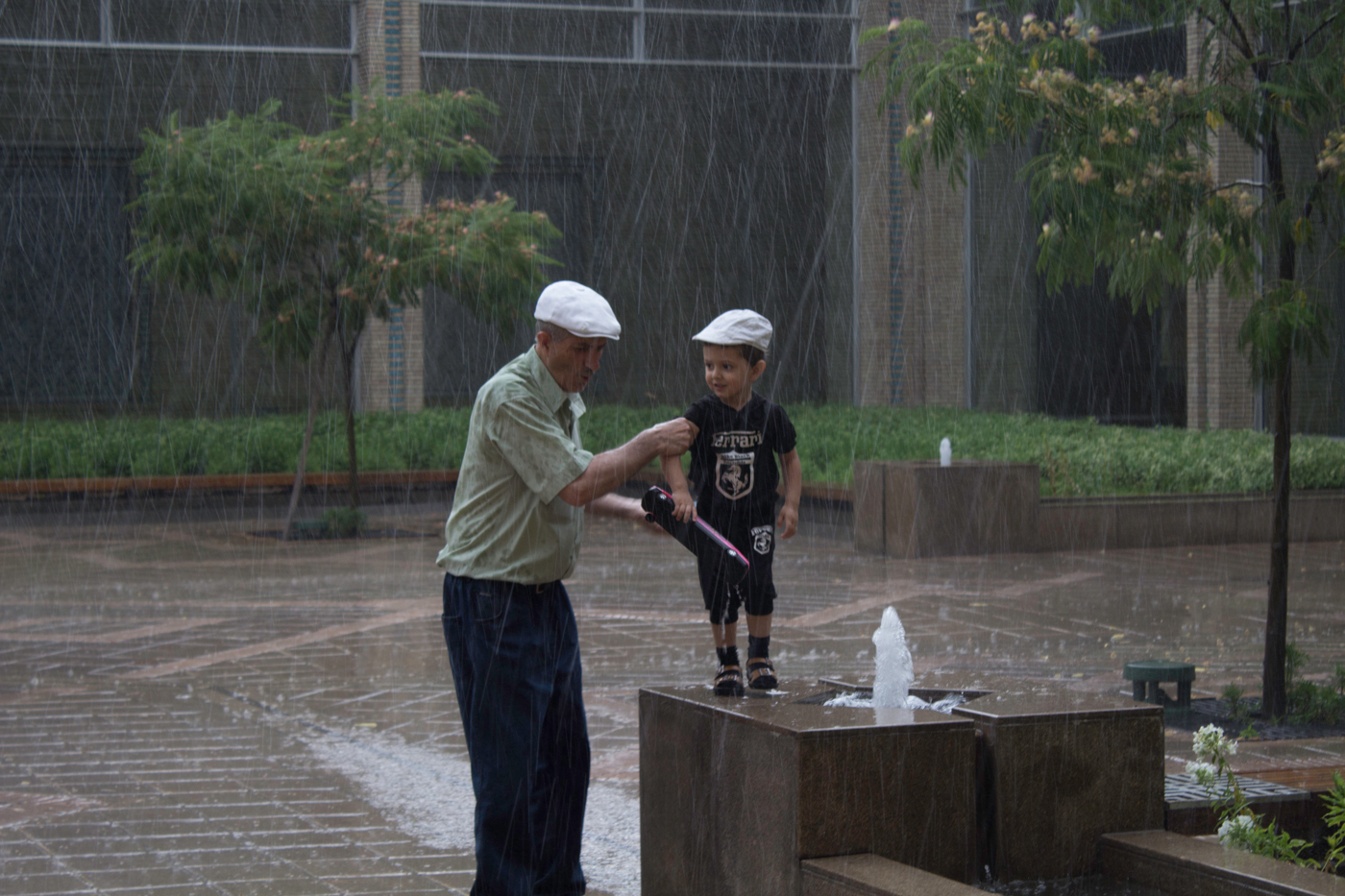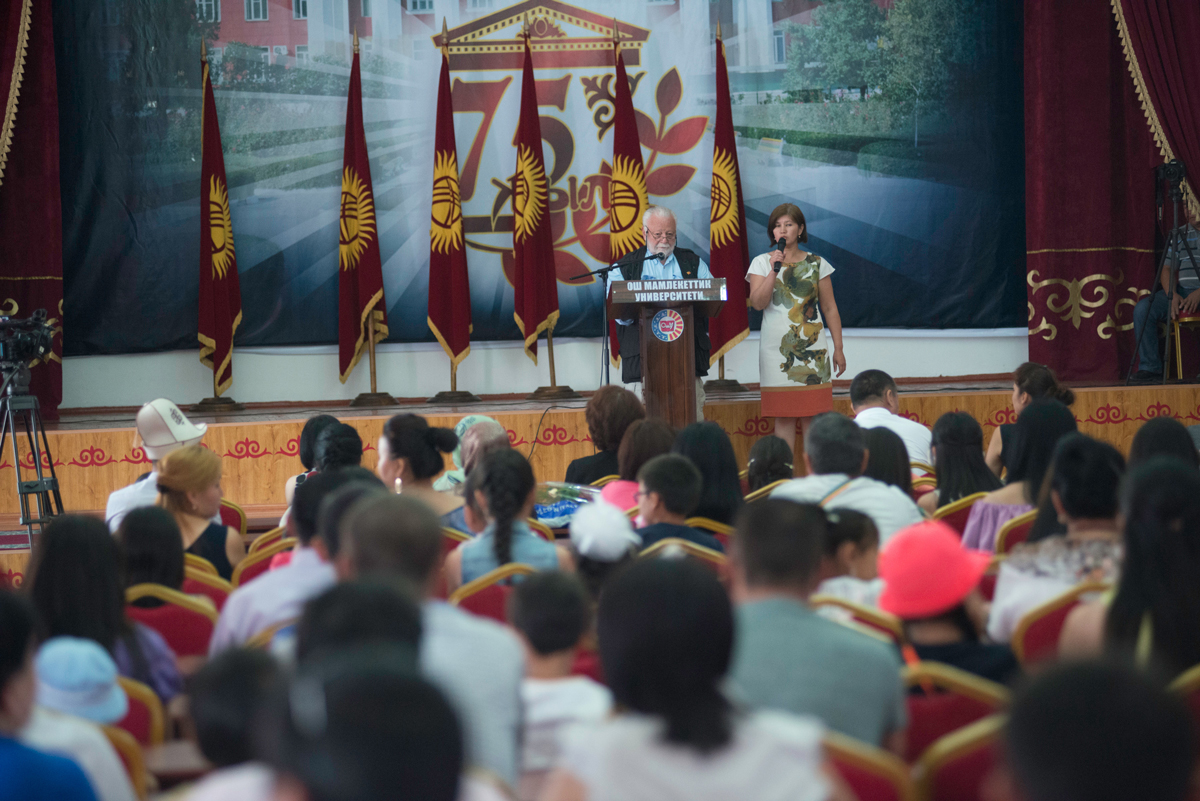Interview with Fredric RobertsBy Anthony FriedkinSeptember 2, 2015Fredric Roberts is an extraordinary man who abandoned a lucrative career on Wall Street to pursue his dream of becoming a photographer and traveling the world. He instantly distinguished himself with a powerful vision. Today, his photographs are exhibited in numerous galleries, have won prestigious awards, and are published in three books. Currently, his remarkable journey has transformed into creating workshops to teach photography to high school students in various countries like India, Bhutan, Kyrgyzstan and more are planned. With a team of instructors, Canon digital cameras, laptop computers and Lightroom software, these workshops provide an incredible experience in learning the fundamentals of photography. His goal is to teach these kids to express themselves visually and to set them on a path to becoming committed, professional photographers who will help make the planet a healthier, more benevolent place to live. In my interview with Roberts, he discussed in detail his amazing transformation from Wall Street to his exceptional work as a photographer and, finally, to the current incarnation leading workshops for teenagers in other countries.
Q: So right away, I was thinking, what inspired you to become a photographer? A: Starting right out of Yale I went to Wall Street, and was trained by Lehman Brothers when Lehman Brothers was fabulous and classy. Then they moved me to Los Angeles in 1971, New Year’s Day. In 1976, I incubated my own firm, and in 1980 I went out on my own. I was doing mergers and private financings—a business, which in those days, people did not go out on their own to do. By ’86, I had had a moderate amount of success, but I was not happy. The ’80s changed the business substantially, and I wasn’t thrilled about it. I had a friend who worked in the travel business who said, “Gee, we just got permits for Tibet; the first people who are going to be able to see Tibet. Would you like to go? I can get you a permit and get you in.” I said, “Fabulous,” because I wanted to get away to think over my life. So I went away for six weeks. I went to Thailand, China, and Tibet. A couple of weeks before I left, somebody said, “Do you own a camera?” And I said, “No, I don’t.” They said, “Well, you’d better go buy one.” So I went into Samy’s relatives, at Bel-Air. I walked in and I must have had a huge bull’s-eye on me that said “Schmuck With A Credit Card.” And so they sold me this expensive Canon 35mm camera with the lenses and a million rolls of slide film. And I didn’t know anything. I’m on the plane flying to Bangkok with all this stuff laid out on a tray in front of me with a book trying to figure out where to put the battery. And so, for six weeks I just went out on my own and shot pictures. When I came back, I didn’t know what to do with them. There was a course at UCLA taught by twoNational Geographic photographers; a husband and wife. I went there, and I brought my slides. They looked at the work, and the husband said to me, “Where did you learn how to photograph?” And I said, “Nowhere. I didn’t know anything. I didn’t even know where to put the battery.” And he said, “Well, we think you’re really good, and we’d like to teach you.” So I went to their house for the first session, and I was there for four hours. And they were going crazy for all the pictures that I’d taken. I was supposed to come back the second week, but between Week 1 and Week 2, a couple things happened. First, I had decided on this trip that, even though I didn’t have a lot of money, I was going to retire; that I had enough money and if I lived modestly, I could retire. I’d always done a lot of charity work, and I figured I could spend the rest of my life doing charity work. But the second thing that happened during that week was that I discovered that somebody had stolen all of my money – which is a story that is much too long to tell. So I went back to these people’s house and I gathered up all my slides. And I said to them, “Frankly I’m no longer thinking about retiring and taking up photography. I’m thinking about committing suicide.” And I took the camera and the lenses and the slides and threw them in a bag and threw them in a closet and did not look at them for 14 years. |
||||||
|
||||||
| Q: So what year is that now, when you put these things away?A: 1986.Q: 1986?A: A lot of things happened between 1986 and 2000, many of which were positive, including the fact that people were so impressed with how I dealt with the fraud, that had not only ensnared me but a lot of other people, that I was elected chairman of the whole industry. I was elected Chairman of Wall Street, and I had a lot of notoriety and so forth. And I continued to do my charity work. Starting in ’89, I built at the Los Angeles Music Center what is I think, the most successful scholarship program in the country for high school students gifted in the arts – called the Music Center Spotlight Awards.Later in the late ’90s I worked on a small committee that raised a large percentage of the money to build the Walt Disney Concert Hall. So I’ve always done a lot of charity work.Then came 2000, and I felt as though I was financially secure enough to retire again. Only this time I really did it. And somebody said to me, “Didn’t you do photography once a long time ago?” And I said, “Oh, yeah. I forgot about that.” So I went back to look for this fellow, and he had died of prostate cancer. So I said, “I guess that’s the end of my photography.”
Q: This was the professor at UCLA? A: Yes. Q: The National Geographic guy? A: Yes. And I said, “Well, I guess that’s the end of that.” And they said, “No, there are these workshops in Santa Fe. You should go.” So I called the workshops in Santa Fe, and they said, “We have a beginners’ course that starts with, “Where do you put the battery in the camera.” And it starts in about two weeks, and I think somebody just dropped out. We have one place available. Do you want to go?” And I said, “Sure.” I had nothing to do. I was retired. So I went to Santa Fe, and I went to my first class. It’s a one-week workshop, and I brought my slides. And they looked at my slides, and they said, “Where did you study photography?” And I said, “Nowhere.” And they said, “Well, we think you’re a prodigy. Maybe you should keep doing this.” So the next thing I knew I took another workshop and another, and another. In total I took ten workshops. And now I’m on the Board of Advisors of the Santa Fe Workshops, which I think are fantastic and…
A: And Reid Callanan has become a very close friend of mine. Q: Let me… forgive me for interrupting. I’m just curious. When you first started photographing, were you working with a digital camera or a film camera? A: I worked with slides. Q: Oh. So your first experience out was with film? A: Yes, with slides. Q: With transparencies, right? A: Yes, all the way through the first workshops in Santa Fe, which is I think extremely good training. Q: Definitely. A: Because slides are so unforgiving. Q: Exactly. A: So when I was shooting slides, everybody said, “Well, you don’t know about the zone system, and you were never in a darkroom.” Like I was disadvantaged. Q: Right, right. A: But now I feel the same way about guys who never shot slides because slides, I think, are a fabulous discipline. Q: Absolutely. A: It wasn’t until 2005 that I started shooting digital. So, I took these workshops, and the next thing I knew a friend in New York looked at my work and said, “Gee, you should have a gallery look at these.” And another friend of mine said, “Gee, a publisher should look at these.” And suddenly I had a gallery show and a book and then awards and then another book and then more gallery shows and then museum shows. And soon, my work was in several major collections. Q: So, you had no experiences of photographing, growing up as a child or a teenager? A: Essentially, zero. I owned a camera that I used once a year. I didn’t know anything. Santa Fe really taught me, from the ground up. Whatever I am, formally, I owe to them. Whatever I was informally, on my own I guess, I owe to me, which I did in ’86 before I ever heard of Santa Fe. The fact is that they really helped me crystallize whatever it was that I had in my head and whatever talent I had. |
||||||
|
||||||
| Q: What do you think it is, that defines photography as an art form, that separates it from the other arts?A: I think it’s more difficult now because everybody with a cell phone can take a perfectly exposed photograph. So everybody thinks they’re a photographer. Also, cameras are so sophisticated and automatic that everybody can do it. But there is still an art to it. Everybody knows how to write. Everybody went to the first, second, and third grade, and they know how to write, in the mechanical sense of writing script or block letters. This is what I tell the kids in the workshops that I teach, “We’ll teach you, the same way your first grade teacher taught you, how to shape letters. First you learn how to shape letters, and then you learn how to put them together into short words. Then you write longer words; you write sentences, and then you learn spelling and punctuation and syntax. So the farther you go in school, you learn more about the more artistic aspects of language. But the fact is, if you don’t have anything to say, it doesn’t matter that you know how to write. And today, just like with cameras, you can use a word processor. You don’t even have to know how to form letters and write with a pen. You can sit down at a word processor that’ll check your spelling and fix your punctuation. But if you have nothing to say, it’s irrelevant. And it’s the same thing with photography. If you have nothing to say, then anybody – just like anybody -can sit down at a word processor, anybody can pick up a camera and take a well-exposed picture.So I think it’s all about the content. And, yes, will people look at a beautiful picture better than they will at a picture that’s badly exposed or badly composed? Yes, they want to look at a pretty picture. But the fact is a pretty picture in and of itself is not enough. It’s an aesthetic experience. And I think that photography is no different.Q: Yes. Well clearly, there’s the technique involved. I guess what I was trying to say…A: No, no, it’s not that… What I’m saying is it’s not so much about technique.Q: Right.
A: It’s like when you learn how to drive a car, you’re worried about steering and braking and parking and all that. But after you know how to drive a car and it becomes second nature, it’s about where you’re going. It’s not about driving the car anymore. Q: Precisely. A: Or riding a bike, same thing. Once you don’t fall off and break your leg, it’s about where you are going. Well, it’s the same thing with photography. It’s what you are doing with this language because we teach these kids… we teach photography as a language. Q: Let’s back up just a second, and maybe you can explain what the workshops are about, and how the idea came to you to do the workshops. A: Okay. Well, here was this photography career that sprang out of me almost wholly formed, vastly refined by the Santa Fe workshops. And I was always a traveler. My business took me around the world, since a lot of what I did was international. I always liked traveling. Moreover, I was always surrounded by people who defined themselves by money. I mean, Wall Street in general is guys chasing after money all the time. And what I found (particularly in third world countries which is where I, out of sheer serendipity wound up) is that people had tremendously rich lives despite having no money. I met a lot of subsistence farmers who live in villages where they have incredible family lives and great relationships with their neighbors; community lives. They were very diligent, very honest and very hard working and wonderful to their kids. And their kids were wonderful to them. You had four generations living in one house, and everybody was taking care of each other. They didn’t have two nickels to rub together, but they were wonderful people and generous to a fault. You walk through a village in the middle of some third world country where people are really subsistence farmers, and the first thing they do is invite you in for some tea, or food, or lunch, or breakfast, or dinner. I live in Los Angeles. You could come to my street and you could walk up and down that street for ten years, and nobody would come out and say, “Hey, do you want to come in for coffee and a bagel?” A: Right. But, I mean, they’d call the cops and say, Q: Yes, yes… A: “There’s some strange guy out here walking around, and I don’t know what he’s doing here.” Q: Right. A: That’s the difference. I didn’t know that I had a point of view with my photography. I didn’t realize it. Somebody at Santa Fe once said, “You don’t have to have a point of view. But if you have one, your photography will be better.” And after shooting for a few years, I looked at my stuff and I said, “You know, there is something that’s sort of subliminal. There is a subliminal message here and that is that money doesn’t make you rich.” My books took on this theme. Q: Yes, I know that. A: My three books start with an old religious text that says, “Who is rich? The person who’s happy with what he has.” You can look at my work and see that, or you can look at my work and not see that. But I hope that the message is in there; that there’s more to life than just making money. So when I retired in 2000, I certainly was not as rich as all the other guys in my business. But I didn’t care. I had enough for me. There’s nothing in my life that I can’t afford to do that I want to do. So I feel totally satisfied about where I am. But what happened was that after awhile the photography, with all the success and all the awards and all the shows and all the good feedback and all the good feelings, eventually had sort of diminishing returns. It became like work again. Would people buy the work or not buy the work? Were people going to sell the work properly or not sell the work properly? Was I going to get paid in the end or not get paid in the end? What about my books? Would they be properly promoted? Who was going to sell them? And after awhile I just said to myself, “I don’t need this. Photography is not going to make me rich, and it’s not going to make me poor. The only reason to do it is because I really love doing it.” Q: So it didn’t diminish your joy of actually shooting and going places, correct? A: Not the photography itself. Interestingly, two years ago I went to the Kumbh Mela. I don’t know if you’re familiar with that. It is a once-every-12-years incredible Hindu festival where 40 million people come periodically over a two-month period; 40 million, okay? That’s not a typo, and that’s not an exaggeration. They come and they bathe in the Ganges, and they wash away their sins. I mean, 2 million people go to the Hajj in Mecca, and everybody gets excited about it. This is 20 times more people. I was there for six weeks living in a tent; albeit a tent with a toilet and a shower. It was a tent. And I was there and experiencing that. To experience it live with a camera in your hand to me is a more enriching experience than without a camera in my hand, although I don’t always photograph everything I see and love. I always think the best camera you have is your eyes, and the best recording device you have is your brain. But often, being able to photograph things and having the ability to use a camera and shoot pictures enhances the experience for me. So I loved being there, and I loved taking pictures of it. I haven’t figured out yet, as an example, what I’m going to do with that work. We’ll see. Q: Yes, I understand, now getting back to the workshops, A: To the workshops. Q: … how the workshops happened? A: So here I am with this career that superficially looks really good, but I’m starting to feel less and less good about it. About four years ago somebody came up to me and said, “Would you like to do a workshop? There’s an NGO in India, and they’re looking to do a workshop.” And I said, “Well, you know, it’s…” Q: Forgive me. What is an NGO? A: Non-Government Organization. It’s basically a charity. Q: Right, excuse me. A: Like the Red Cross. Q: I just wanted to be clear about it. A: Right. So I said, “Great. Great.” It was consistent with what I was doing at the Music Center. It was consistent with my life. So I went there, and I set it up. I raised some money, and I bought equipment. I bought 20 cameras, and I bought four MacBook Pros. I put together a faculty, and we flew over and we taught our first workshop to Indian kids. I always thought strategically, and I had sort of a plan that was beginning to percolate in my head that was becoming more refined as I did it. I wanted half boys and half girls because I wanted a gender mix. And in the third world countries, girls are generally… Q: Right… Not treated the same? A: …marginalized. Q: …equal. That’s right. A: Right, marginalized. And I wanted half city and half country kids because I wanted a cultural mix of kids who didn’t normally intermingle. It worked out extremely well. The work was wonderful but the NGO really did nothing with the work and so I was put off by that. I came back and did a second workshop the following year that included bringing the original kids back for a special three-day advanced workshop in which, additionally, we gave them very advanced Lightroom skills on the computers. |
||||||
|
||||||
| Q: I’m just curious about something; had these students ever taken pictures before?A: No.Q: Had they ever held cameras before?A: No.Q: Did they have any language at all, or skills in computers . . . Anything?A: No.
Q: …for you to build on? Nothing? A: No. Q: Really? A: Yes. And that’s a huge advantage. Q: It’s a huge advantage? Can you explain that? A: Huge advantage because… But I’ll get to that. Q: Right. A: So we came back the second year, and we did an advanced workshop with those first 20 kids, and then we did a new beginners workshop with 20 new kids. Sadly, I realized that the NGO was not really using the students’ work, and I was very turned off. So I tried to move the workshop to another venue but it was too complicated. So I just said to myself, “You know what? This was a nice exercise. It turned out in one respect very well; in another respect not so well. I’m just going to stop. That’s the end of it.” I checked the box, and it was over. Miraculously a year later, a very large charitable institution called me and said, “We heard about your workshops. We want you to do this. We’re a big operation. We’re several hundred million dollars in volume and…” |
||||||
|
||||||
| Q: Was this an American charity?A: This was an American charity—worldwide charity, but it was the American member of the board. So I said, “Okay, fine. I like the idea. If I’m with somebody who’s substantial, that makes life easier for me.” So I raised some more money and was going to do it, and then I found out that they take a large portion of money out of the budget for their own overhead charges. In fact,Q: Just to be clear, did they want you to come to the table with money you had already raised on your own?A: Yes.Q: So they wanted to participate in money and funds you had already…?A: Raised, and they were going to take money off the top. And then they billed us for all kinds of additional expenses. In order to mitigate this, I set up my own 501(c)(3). I took the money into my own foundation. I added some of my own money. I added some of other people’s money. I was committed to two workshops with them, which I completed.
Q: Right. A: But now I’ve found great partners; wonderful partners really. And I’m thrilled. So now we have incredible opportunities. We have NGO partners around the world. We have more than we can handle. We have more opportunities to do workshops than we have capacity for. Q: Great! A: We have plenty of financial capacity. And thanks to Samy’s we have plenty of equipment. Q: Fantastic! A: We have plenty of kids. The work that the kids produce is extraordinary. Everybody who sees the kids’ work says, “This is unbelievable; literally unbelievable.” And it doesn’t matter whether it’s the local NGOs, the press . . . Anyone in the U.S. who looks at the slide shows says, “This is impossible. This could not have been done by third world high school students who never touched a camera before.” |
||||||
|
||||||
| Q: That was a question I had. Why did you choose high school age?A: Well, this is what I learned with my scholarship program at the Music Center. High school kids are at a very pivotal point in their life. It’s great. When I was in grade school and I was in the third, fourth grade…They take you to see a ballet or something, and you have this vague notion of what a ballet is. But if you’re 14-years-old and you go to a ballet and it impresses you, you’re going to really think about it. It could be a life-changer. We literally changed the lives of the kids who were in the scholarship program at the Music Center. So it’s a very formative time of their lives, and it’s a moment at which, if you can impress them with a concept or give them a skill that they can use, they will really leverage it at that point.Q: That’s a very good answer. What kind of equipment do the kids get to work with?A: We use Canon Rebels with an 18–55 lens, which is an unfortunate lens, but it’s what they come with. It’s what we could afford in the beginning when l bought them. Now, thanks to Samy, we have a great relationship with Canon.Q: Samy is enthusiastically committed to what you’re doing and helping you with your workshops.
A: We teach with 20 cameras, and we leave four cameras behind. The goal is not to have kids have a fabulous one-week experience and then leave and have the air go out of the balloon. We want these kids to have a skill that they will use throughout their life. |
||||||
|
||||||
| Q: Maybe even become professional photographers?A: We are thrilled if they become professionals, and occasionally they do. But even more important than that (although that in a third world country is enormously important) is that they have the ability to literally change their world, because they can use these cameras in very powerful ways. They can tell stories. They can tell the story of the NGO after we leave. They can tell the story of healthcare or education or nutrition or microfinance or electrical power in rural areas. They can tell any story.We don’t go where there’s strife, and we don’t shoot stories of that strife. We don’t shoot stories that are political in nature. We shoot humanitarian stories or global stories.Q: So the kids get an assignment in a sense?A: They get three assignments during the week, and if you want I can go through the template of the workshop.Q: Yes, please.
A: The workshop is a one-week workshop. It generally starts – and I say “generally” because everything is flexible in life, as you know, especially in photography – we start on Sunday; we end on Saturday. We say it’s a one-week workshop, but actually there’s only five days of instruction. So we give them these cameras on Day 1, Sunday morning, and they can only shoot on manual mode, period. |
||||||
|
||||||
| Q: Quickly, how do you deal with the language issues, concerning the instruction?A: We have translators, and sometimes it’s complex because we have kids who speak the national language. Then sometimes the country kids speak a tribal language or a local language. So in India we had people speaking Hindi and people speaking Garasia. In Tajikistan we had people speaking Russian and people speaking Tajik. In Kyrgyzstan we had people speaking Russian; we had people speaking Kyrgyz. So you had two simultaneous translators going on while your lecturing, and it’s hard to tell a joke.Q: (LAUGHTER)A: You know what I mean? By the time the punch line comes out, nobody knows what you said, and you forget what you said. So it’s hard. Anyway, Sunday and Monday we teach them the basics of photography, and you’d be astounded at how fast these kids pick up manual photography.Q: Like the concept of an exposure, and what it means?A: Absolutely. Such as the relationship between shutter speed and blurring and freezing action, and the concept of aperture and depth of field. Interestingly, at the end of the week we accumulate some of their best pictures for a special slide show of their best of the week, and several of those pictures come from the first day because they’re completely unfiltered. | ||||||
|
||||||
| Q: interesting.A: These kids have a person inside them who is their creative genie. If they have something to say, it’s going to come out. We teach them how to express themselves visually, and it comes out. So Sunday and Monday is all about the camera and exercises and exposure. And they get it very quickly.Q: So that represents a full day’s class?A: Full day. We start at 8:00 in the morning usually and sometimes we’d go to 8:00, 9:00, 10:00 at night. It’s a long day. And it’s a longer day if you’re my age or the age of the rest of the faculty because we’re 12 hours off on the jetlag, we’ve been flying for 24 hours to get there. We have a couple days to prepare, and now suddenly we’re up at a breakfast at 6:00 a.m. organizing our day that goes on until 10:00 p.m. Then people get on their computers and try and call home and do things and then go to sleep. It’s exhausting. It’s exhausting for the kids, and it’s exhausting for the faculty. But it’s an exhilarating exhaustion.Q: I can imagine!A: It’s so stimulating. There’s no way really to describe it. So then comes Tuesday, and Tuesday is the first of three stories. The stories are determined before we leave for the workshop. The NGO gives us the three stories, which we analyze very carefully before we go. The stories have to be compelling visually, because there are no words. There are no captions. There’s no text. This isn’t like some video where somebody shoots a picture of a leaf and then talks for an hour about agriculture. If it isn’t visual, if you can’t say it visually, you’re not saying it. If you look at the slide shows that the kids have done and you look at things like everything from sending them to preschools where it’s fun to look at kids playing on jungle gyms and digging in sandpits, to having them go into emergency rooms where people were literally dying in front of them. Some of these stories are very powerful, and some of them are very meaningful – like delivering electrical power, hydroelectric power to the rural areas of Tajikistan. That’s a critical piece of infrastructure that the NGO is providing for the country. So these kids are telling really powerful stories.
Tuesday, Wednesday, and Thursday they get a half a day of classroom work, and then we send them out to tell stories, to shoot stories. When I said we only give them five days of instruction, now we’re at Thursday. That’s the end of the fifth day. On Friday we send them out on a free shoot. We give them something that the NGO wants, that’s not necessarily story-related, such as “We have a school here; would you take pretty pictures of the school?” So we do that. We send them out on that, and the faculty then spends Friday editing the slide show all day and all night. And we create slide shows that are best of work of the kids from each group. What I neglected to tell you is that on Day 1 we divide the kids into four groups of five, and we’re very careful to try and divide them up between boys and girls and city and country. Q: Do you notice a difference between the students from the country and the ones from the city? A: Absolutely. Q: In how they view things and how they express themselves? A: But the fact is that the mix works very well. The kids from the city think they’re very sophisticated and the kids from the country start out feeling sort of socially insecure. As soon as the city kid finds out that the kid from the country has an incredible eye and has taken some fabulous pictures, suddenly the roles are reversed. Q: He’s got a new respect for the…? A: He’s got a new respect for him. They work together, and then help each other out. Then suddenly they’re friends, and it’s a very powerful formula. And so we’re sticking with this formula. |
||||||
|
||||||
| Q: How are the kids selected?A: The NGO selects them based on the template that we give them. The first piece of the template is boys and girls, city and country. Then we want as little previous photographic experience as possible, but some interest in the subject matter. So if we’re going to shoot the Aga Khan stories or the Bhutan Foundation stories or the Asia Foundation stories or whatever, we want the kids to be interested in the subject matter. Whether it’s the environment or healthcare, nutrition, livestock, farming procedures, microfinance, rural electrification – whatever it is, we want the kids to be interested in it. And they vet those kids based on that. Maybe they have them do an essay, or they have them come in and be interviewed. But we’re only talking about 20 kids, so it’s not hard.Q: I see.A: So, Friday we’re editing. They’re out doing their free shoot. They come back Friday afternoon; they download. For graduation, we have each kid pick their absolute favorite image of the week, and we make prints. We go to a local print shop and work on their color balance and so forth, and we make sure that they’re really good. Today you can go almost anywhere and find a good photo print shop. Then we make prints; two copies of each of the kids’ favorite print. On Friday afternoon we bring them back, and we have them sign the prints and it is a very emotional experience.Q: So, are these 8x10s, basically?A: Oh, bigger.
Q: Bigger? A: Bigger, yes. They’re like 16 x 20s. Q: Okay. So you give the kids hard copy prints of what they… A: Hard copy prints. But when they come in to sign those prints and they see their prints for the first time, they’re crying. We’re crying. Q: Wow! A: The staff is crying. Everybody’s crying. There’s a lot of crying. There may be no crying in baseball, but there’s a lot of crying in these workshops. Q: Do these kids go home at night and then come back? Or do you put them up for the duration of the workshop? A: Rarely they do go home, but generally we don’t like them to, so we put them up. Usually we put them up in a hostel or we put them up in a school dormitory. But we take really good care of them. And the cultures that we’re dealing with are such that girls of that age do not sleep in the same building with boys. So we go through a huge process of… Q: Separation… A: …convincing the mothers that it’s okay to let their daughters come with us. Then we have to show them the security measures and the chaperoning systems and so forth. I’m used to it. In fact, I know more than the NGOs do. They’re amazed. The local people are amazed that I understand their culture better than they do so that I can show them how to thread the needle. Q: What has been the biggest surprise for you personally about this experience? I mean, did anything come about that you absolutely didn’t expect? A: How good the kids are. Q: Really? A: How good the kids are. The kids are so good that… Q: As photographers? A: As photographers, as storytellers, as creative people . . . not just artists, but expressive artists. Q: Do you show them celebrated and historical photo essays in class, done by other famous photographers, like Eugene Smith? A: We show them our own work. Q: Really? Your own work? A: And to a certain extent they mimic our work a little bit. But the fact is that our work and the work that they’re asked to do is really different. For instance, I have a book on India. I have a book on Burma. I have a book on South Asia. Q: I was looking at those. A: Right. Q: The looked great on the Internet! A: Thank you. I’m reasonably accomplished, and I’m the only American ever to have won the Best Foreign Photographer for India award. Q: And you do all your own editing yourself? Do you work with an editor? A: I have people who help me—I mean, curators who will help me curate my books. Q: Sure. A: The fact is that I’m not in Tajikistan shooting; I’ve been to Bhutan before several times. But I didn’t shoot hospitals and traditional healthcare and early childhood development centers. These kids are shooting stories that they’ve never seen us shoot, and yet they’re using our technique, and the things that we’re teaching them, in their own way. They’re learning how to write their own recipes and cook their own soup. Q: Do you critique their work? A: Absolutely; every day, every single day. Q: Are you critical? I mean, do you give them a really hard and detailed critique? A: Yes, I do. Some people are softer. You have four instructors. When I said we divide the kids into four groups, each group has a dedicated instructor. Q: Oh, I see. Okay. A: Each group has a dedicated instructor and that provides two things. (1) The kids have somewhere to go instantly if they’re having a problem or if they need advice in terms of, “I can’t get this depth of field thing to work”, “I don’t know what’s the matter,” “why is everything blurry,” “why is this happening”, “why was it too light,” that kind of thing. So they can go immediately to their instructor, and that person will help them. And also, the instructor can look at what they’re doing and say, “Let me see your camera. What are you doing?” Q: Do the instructors go out with the students and accompany them into the field? A: Yes, into the field. That’s what they’re really there for and also to work on the edit. The other thing is that we need these groups. You can’t go into a little clinic room with more than five kids. Sometimes five kids are too many for a little room. They get in each other’s way. Dividing into these groups is really very, very important. Q: Do you draw straws? How do you decide? A: I sit and I say, okay, we’re going to divide up the girls and the boys and the country and the city, and we don’t want people who are friends, and…
A: Every one. I go to every one. Q: And you’ve done four or five of them? A: I’ve done eight. Q: Oh, eight. Sorry, I thought it was less. A: Yes, eight so far. And we’re planning to do four per year, going forward. Q: And what are the new ones coming up? A: We just got back from Tajikistan and Kyrgyzstan. Before that, we were in Bhutan for the second time. We went to Tajikistan for the second time and did an advanced workshop, and then the beginners in Kyrgyzstan. In October we’re going to Hyderabad in the south of India, and in January to do our first one in the U.S. ever. Q: Yes, I was wondering about that, because it’s such a dynamic formula you’re working with and applying. American kids coming from inner city poverty in Detroit and a million other cities could really benefit. A: Right. Well, we have limitations, and I’ll get to that because that’s a challenge in these workshops, as well. So let me talk about continuity, because that’s important. The formula here, as I said, is not to have a fabulous week and then walk away and leave. It’s not just leaving the cameras behind, which we do. We leave four cameras behind now, which, now that we have that many cameras, we can do. And we leave two installations of Lightroom, as I told you, so that the kids can continue to do file management. Q: I assume that’s with computers, obviously. A: That’s with computers that already exist there. We don’t leave them new computers. But the NGO has them, and they figure out strategically the locations for them. They figure out a sort of library lending system on the cameras, and they maintain them. But that’s not enough. We come back the following year, and we bring back the original 20 kids. And we hold a three-day really tough, no-holds-barred advanced workshop. And when you asked before how tough are the critiques; I can assure you, for that advanced class it’s as tough as any critiques at any photo course. Q: So all-20 kids come back for the . . . A: If we can get them. Sometimes, yes. Q: If you can get them? A: Yes, sometimes. There’s always something that happens. Q: Sure, of course A: But generally, we get all 20 kids. And… Q: The same professors also? A: Sometimes, but not always, because that’s another problem that we’ll talk about, which is scheduling. Scheduling is a huge problem for these workshops. So we bring them back, one of the things that distinguish the advanced from the beginning workshop is (1) the level of critique. First of all, there are no stories; there are themes. We give them a more creative environment. So instead of saying, “Today we’re going to shoot prenatal mothers in a clinic,” its – one day is nature, one day is architecture, and one day is people. And we take them to locations where they can do that. Q: With the same basic equipment they had the first time? A: Same exact equipment. And then we invite the NGO staff in because we have the four cameras left over from the year before, plus we have the four new cameras that we’re bringing this year. So we have 28 cameras in total. So we can invite their staff to come because what we’re really trying to do, is to create a self-generating structure that maintains itself over time. Now at the end of the three days we try and pick some of those kids who are really good as teaching assistants, and we have them join us for 20 new beginning kids who start a day later. |
||||||
|
||||||
| Q: That’s a great idea!A: Right. So now these kids learn how to be teachers, and they mentor the new kids. And of course the kids are generally from the same area, so now there’s a whole group of 20 mentors for the 20 new kids who come in. And now in the pool of photographers there are eight cameras instead of four, and four Lightroom installations instead of two. So the kids really get a chance to practice. They know we’re going to be back. So they know this is not their last shot.Q: What happens when you come up with a student, one you can tell has some serious psychological issues going on or some serious problems that arise from their home and their immediate families? How do you…?A: We deal with it.Q: You somehow deal with that or . . .?A: We deal with it.
Q: Do you comfort them or counsel them? A: It’s interesting that you said that. So this last one in Kyrgyzstan, a girl comes in at the end of the first day, and she’s in a pool of tears. I mean, she’s just crying and crying and crying, and I said to the staff, “What’s the matter with this girl?” And they said, “Well, she’s terribly lonely. She’s never been away from home before. She lives in the suburbs, and she’s away from her parents. She can’t understand the photography.” And she was in my group. And I sat with her, and I waited till she stopped crying. And I said, “Look, this is not easy. This is not easy for anybody, and I understand that you don’t think you’ll get it. But why don’t you trust me for another day? And let’s go out together tomorrow, and let’s work on this. Let’s see if you can’t get it tomorrow.” In the meantime there was a woman who is part of the staff, who’s a pretty good photographer and speaks fluent Russian and Kyrgyz. She took this girl aside that night and reviewed everything that we’d gone through in the day. So the girl felt a little better the next day. And then she came out with me the next day, and I spent a lot of time with her. I had four other kids in my group, but I spent a lot of time with her. I kept saying to her, “Now see how you did that? See how this works?” And I keep positively reinforcing her; not lying to her, but showing her where she’s done well. At the end of the week she had one of the best pictures of anybody, and her parents were flipped out. They came to the graduation, they saw her print, they saw her stuff in the slide show, and they went crazy. And now she wants to be a photographer. Q: Do most of these kids have computers at home or access to them through school? A: No. They have access in their schools usually, and they all have phones. One of the things that we’ve done is to set up a private Facebook group where they can come in and submit pictures. And we’re trying to improve the level of continuing education, using that medium. We’re going to try and give them assignments and have faculty permanently assigned to the Facebook group so that they can critique their work and so they can continue to submit. I think in the end we’re going to have to build a discreet website, a private website for the kids, which will include a translation widget so kids who speak Russian can to speak to kids who speak Spanish, can speak to kids who speak English, and so forth. We want that continuing education. Q: Do you ever suggest that they research any photographers like Bruce Davidson or Helen Levitt or Sebastian Salgado? A: Actually there’s one of our faculty members who talks about that all the time. Q: He does. Or, she does? A: Yes, he does. And he talks about Cartier Bresson and Ansel Adams, and many others. Q: Right. But they don’t have access to see the work I guess.
Q: Really? A: Yes. Q: Through the Internet? A: Well, the Internet is always dodgy. If they can do it, they can get it on their phones. It’s narrow bandwidth. But phones are very cheap and work very well in third world countries. They work far better than they do in the United States. Q: That’s interesting. Do you ever bring books with you, any photo books to show them? A: I usually bring one of my own books, and I leave them in the library and the school so the kids can come in and look. So the last day, which is Saturday, is the graduation, and that is a powerful event. We take a big auditorium, and we invite the parents and friends and families and everybody for the kids. Then we invite not only the staff of the NGOs that we’re working with, but their partners. So if, as an example, the Bhutan Foundation funds the Bhutan Nuns Foundation, then they come. Or if we’ve gone to a nunnery and photographed the nuns, then the nuns come or the administrators of the schools come or the parents of the kids who were at the early childhood development centers come. Then we usually get senior government officials who come. So we get the Secretary of Education. We get the Mayor. We get the head of the education committee of the city council, principals of schools. We get 200, 250 people at a graduation ceremony, and we do two hours of slide shows and speeches. And you’d say, “Who in the world is going to sit through that?” Q: Yes, like the old days with a slide projector. A: Right. Q: Come look at this, my trip to… A: Come look at the pictures, my trip to… Q: …Canada. A: Right. Let me tell you something. They are riveted; riveted. You get done with graduation ceremony, and people get up come running over and say, “In a million years I never expected to see this. This was unbelievable. How did you do this in one week?” Q: Now, I just want to be clear about this, so this is… is this when you come back a year later and you have this graduation ceremony, or this is…? A: No. Q: …the very first time out? A: The first week. Q: First week, okay. A: The first week. This is five days of instruction to kids who have never touched a camera, who shot on manual for five days. Q: Wow! And you talk about low light levels or bright sunlight and all that. You cover everything? A: And composition and blurring and panning and depth of field and every aspect of it. We given them exercises, and they soak it up like a sponge. You’ll see them; I’ll show you the pictures. |
||||||
|
||||||
| Q: I can’t wait to see them. But it’s amazing that they can learn that quickly.A: Yeah. They learn so quickly, you can’t believe it. You wanted to know the surprise. You said what’s the surprise. I’m telling you, this is the shock. It’s shocking!Q: So on the reverse of that question, what’s the downside to any of this? Hasthere been anything that?A: Well, I mean, if the NGO…Q: You feel, lets say for example, difficult challenges you can’t either on your own or with your resources, can’t seem to surmount or get around?A: If the NGO doesn’t use the work properly… We have three goals in every one of these workshops. The first goal is to take these kids and turn them into real photographers. And I mean real photographers, like you are, like I am, like a guy from the LA Times is, like a guy from National Geographic is. The second thing is to get them to use this new photography as a language to express themselves: to tell stories, to tell what’s in their heart, to tell what’s in their mind, to go out there and express some concept. Whatever it is; better healthcare, better nutrition, better education, better this, better that, or the problem with dirty water or the problem with improperly irrigated fields, or whatever it is they want to tell. And we do that, and they learn how to tell those stories. The third thing is to create a body of work that we leave over for the NGOs and all of the partners who are there. So if we’re shooting on behalf, or in partnership with, the Bhutan Foundation and we’ve shot a hospital, then not only does the Bhutan Foundation get the work, but the hospital gets the work. And they can use it for government-relations, community relations, their own recruitment, for fundraising, for whatever.
Q: What does the NGO receive at the end of the workshop? A: We leave them a hard drive with all the pictures for the whole week. Q: I see. A: All the images are organized in Lightroom so that they don’t have to look at 40,000 pictures, which is literally what we leave them. We rate the pictures for them, so they can just pull up the really good ones, or they can view a couple thousand pictures. Then they can edit out what they want, for their own use. So you ask, “What’s the downside?” The downside is that, the NGOs don’t use these pictures, or they use them in a way that’s lame. You come back and have them say, “You know, we put some pictures on the website. It was really exciting.” I say, “Oh, please.” “Oh, we put up some pictures in our office. We put it in our newsletter.” Do something with it. I mean, you’re a big organization. Do something. So that’s the potential disappointment. When these images are not used to what I would consider to be the highest and best use, that’s somewhat annoying and depressing. But it’s okay. Q: Do you tell the kids to be neutral in their observations? A: No. Q: …like as a journalist, or to be passionate about what they feel about what they’re seeing? A: We don’t want to inhibit their passions, but what we do is, if we’re going out on an assignment … Let’s say we’re going out to the traditional medicine in Bhutan; we have somebody from there come in and talk to them for half an hour before they leave. “This is traditional medicine. This is what we do. This is what you’re going to see. This is what we try to accomplish. This is why the Bhutan Foundation is funding it.” And they all know it. Usually their grandmothers are going to these places and getting steam therapy and acupuncture and taking herbal medicines, and they know it. But they don’t know the relationship between the NGOs, and what the people who run it are thinking about that. Similarly, we had a surgeon come in and talk about the modern hospital. So when the kids came in and photographed the modern hospital and the emergency room and the clinics and all that, he told them what they were going to see and how to behave and so forth. As for their expressiveness, as for their creativity, it’s unbridled. They took some amazing pictures of irrigation. I thought irrigation pictures would be totally boring, but they turned out to be fabulous. These kids really find the beauty in everything. |
||||||
|
||||||
| Q: What about the American workshop you’re planning to do? Tell me a little bit about that. Where is it going to be done?A: We’re just starting. It’s consistent with my charitable history. I’ve endowed scholarships at Yale, and I’ve paid for some exhibits at LACMA. I just funded a Photo Study Center at LACMA.So I wanted to do something here. Britt Salvesen and I have been talking about it for a while. The Education Division at LACMA has introduced me to a great charity in Central L.A. It will be all L.A. kids.I’m also talking to the Yale School of Public Health. That’s where I endowed the scholarships because that’s where I went to college. They are working with two local charities, one of which is with inner city kids, and the other is with immigrants, new immigrants. And that’s a fascinating organization. It’s called IRIS. Basically when the U.S. pulls out of places like Iraq and Afghanistan, those local villagers who helped our Army have a lifespan that you measure in hours.Q: It’s horrible what they did to those interpreters. They didn’t help them come to America afterwards.A: Well, right. So now what you don’t see is – and you purposely don’t see this – they take out and remove a lot of these people.
Q: You mean the locals take them out? A: No, we help them come to the United States into what is basically a complex witness protection program, and we take them to innocuous places. But now you’re a villager, okay, from Afghanistan who was herding goats one day, and the next day you’re living in god knows where, in the United States. Not only do you not speak English, not only do you not have a driver’s license, not only do you not know how to get on a bus; you don’t know how to use a toilet. Q: Nobody helps them with any of that? The government doesn’t help any of them? A: Ah, IRIS, this NGO, helps them. Q: Very interesting. A: So that’s a story that we’re interested in telling. I went to their offices and looked at what they were doing. They’re teaching kids how to go to school. They’re teaching people how to speak English. They’re teaching people life skills-not just vocational skills, but life skills, in order to get vocational skills. How do you shop in a supermarket? Q: I’m curious about your own personal opinion on something. How persuasive do you feel the medium of photography can be in changing people’s minds, about their culture or their environment? A: I do think a photo story showing proper healthcare, shown to people in the country that needs to follow the instructions of the proper healthcare, is critical. Q: So you, basically, would say it’s very persuasive? A: Very persuasive. Q: And that an image, a powerful photograph can really change someone’s mind? A: And can change their life. It can change the life of the photographer as well as the person viewing the photograph. Q: Going back to your students… A: I think these kids can be persuasive, and I think that they’re persuasive because they are the people. Q: Yes, of course. A: This is not some guy who comes from the United States, gets hired by some NGO, gets paid 15 grand a day plus copyright, and goes in and shoots healthcare in Kyrgyzstan. These are the kids who live there, whose own healthcare is at risk, who are shooting these stories and understand it. When they go and shoot these early childhood development classes, they were in those preschools before they were in kindergarten. They understand what that playground is like because it was their playground. So, in terms of the power of the message for the NGO, not only is it the NGO’s story; it’s a story told by their own kids. How much more compelling can that be? Q: Yes, that’s fantastic. That’s incredible. Have you personally made any friendships with some of these kids? Do you stay in touch with them by exchanging letters or through emails at all? A: Yes. We form real relationships with them. We communicate with them through Facebook. It’s not the most efficient way to do it, but it’s private and the kids can feel safe. When they submit images for critiques, it’s private. Q: Have any of the students actually followed through with becoming professional photographers, by landing assignments, or by getting paid to shoot stills? A: Yes. We have one kid in particular. He was in our first group, and he was a village kid. And the other kids are all progressing at their own rate doing their own things. They’re all doing extremely well, and they’re all very happy for it. So we’re thrilled. Q: Well, you should be, and I congratulate your efforts significantly. A: Thanks. I can tell you that we’re never more thrilled than we are on graduation day. No matter how many graduations we go to with these kids, every time at the end of those graduations, we look at each other and we say, “Did we really do this again?” I mean, each time it’s better than the time before. It’s an amazingly rewarding experience. Q: How do the kids get their meals? How does all that get handled—their food and everything? A: I didn’t tell you this part, which is that we pay for everything. We pay for all the flights for the faculty to come in. We pay for all the lodging for the faculty. We pay for the lodging for the kids. We pay for translators. We pay for drivers. We pay for cars. We pay for food. We pay for cooks. We pay for prints. We pay for everything. So the NGO doesn’t have to do anything except recruit the students and handle the logistics. It’s great. And these kids eat. You can’t imagine how much they eat! They eat five meals a day; literally, five meals a day. And we all gain weight from this group-all of us. We come back, and we can’t fit in our chairs on the plane. They eat three meals a day—big meals. And in places like Central Asia, they’re eating heavy stuff. It’s meat and potatoes and rice and vegetables. And then two meals a day, they have coffee breaks or tea breaks or snack breaks, and it’s a lot. Q: Do you keep, in a sense, a library or archive of the students work? A: Yes. Q: From all the different workshops you’ve done? A: Yes. Q: That you keep on your own, that you separate from what you leave them, and what they get to keep? A: No. They keep everything that we have. We have everything that they have. Q: Oh, I see. So you do keep like a central, in depth record? A: We keep everything. Q: Of everything that you’ve done? A: So if something went wrong somewhere, we would have it, be able to send it to them. |
||||||
|
||||||
| Q: It’s remarkable Fred, it’s so impressive what you’ve chosen to do with your life.A: I think we’re all put here for a reason. And if we’re going to take up the space on this Earth, that we should at least do something that changes the world for the better; not just be here and disappear, leaving nothing. I think that the way to think about what your legacy is to think about what it says on your tombstone.Q: I make jokes about that.A: Well, do you want it say, “He sold more tires than anyone else?”Q: I know what you mean.A: And this is the kind of people that I was surrounded with. How big are their watches? How big are their planes? How big are their boats? How big are their houses? How big are their art collections? And it’s never enough. They always have to have more and more and more. And whatever they have, another guy has something bigger. They feel like they have to keep going. It’s a bottomless pit, and I feel as though (a) I don’t need that, and (b) While I’m definitely not a saint, I’m doing things that are leaving a legacy that I’m proud of. I think I’m a guy who is making the world a slightly better place in my own small way, and I’m very happy with it. I’m not smug, and I don’t think I’m superior. I just feel as though I’m living my own life in my own way.
And this faculty has people in it who are not insignificant people. One of the guys on the faculty started a museum. He’s a very talented and educated guy. He’s been a photographer for 50 years, and he’s an incredible teacher, as are all of the other members of my faculty. Q: May I ask who it is? A: Arthur Ollman. Q: He’s great. A: He’s a marvelous guy. And we were sitting a couple weeks ago in Kyrgyzstan in a yurt drinking horse milk and eating goat brains. And he said to me, “You look really happy. And I said, “Arthur, I am really happy, and I’m really happy that you’re here sharing this with me because you look really happy.” And he said, “I am.” Q: It’s great to hear this. A: I said, “Arthur, what would I be doing? Sitting with a bunch of guys at a country club talking about golf? I mean, come on, I would rather be here.” It’s like when I was at the Kumbh Mela surrounded by 40 million Indian pilgrims. I would sit on the bank of the Ganges every night and smoke a cigar and have a drink and be thrilled that I was there; just totally at peace. Q: You mentioned how supportive Samy’s camera has been to your program overall, and to the workshops specifically. I had a question. How has Samy’s support for your workshops been helpful for you? A: Let me just say that he helped us with our equipment on a number of different levels, and it got us started. We bought 30 cameras and four MacBook Pros. We got a bunch of installations of Lightroom, and all of that came with his help. He didn’t donate the whole thing, but he would have. It made it really great for us. The way he handled us and those purchases, was very helpful to us. Later when I applied to Canon for a grant to get more cameras, he was very helpful and supportive in that effort. And now we have, in addition to the cameras that we bought, we have 40 more cameras. And we hope to get another 40, and then we’re done. The more cameras we have, the more we can leave behind, the better it is on a continuing basis. So he’s been very helpful, very supportive, and we are enormously grateful to him. He’s a sponsor. We have a sponsors’ page on our website, for what it’s worth, and we always thank him. We always list him because we genuinely appreciate what he did for us. Q: Fred, it has been a great pleasure doing this interview with you today, and sharing with our audience your extraordinary personal journey, in not only becoming a fine photographer yourself, but also your creation of these meaningful and expressive photographic workshops you’ve accomplished with teenage boys and girls around the world. Thank you. http://www.samys.com/b/Interview-with-Fredric-Roberts-by-Anthony-Friedkin/648064470258339568.html
|
||||||
